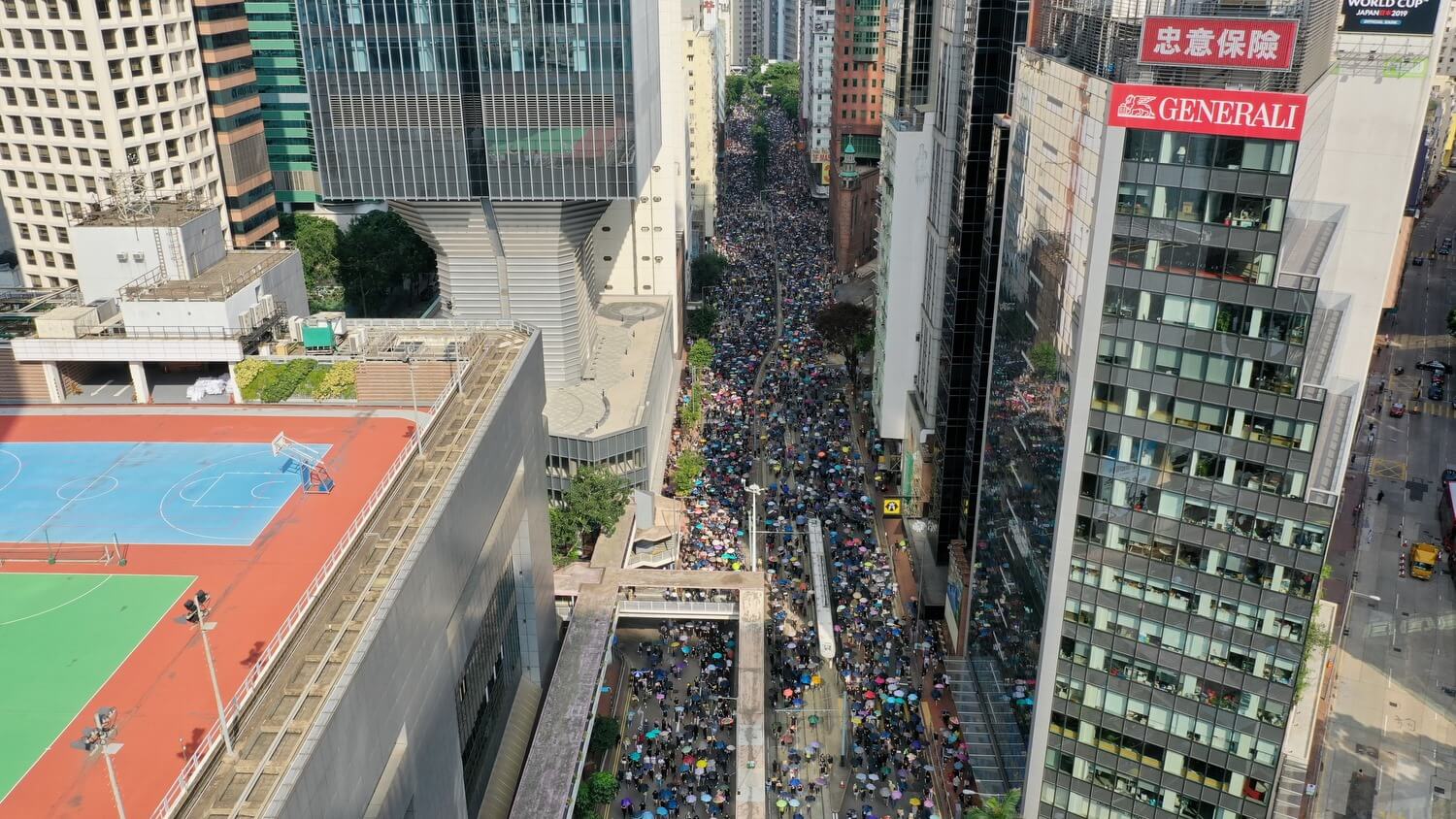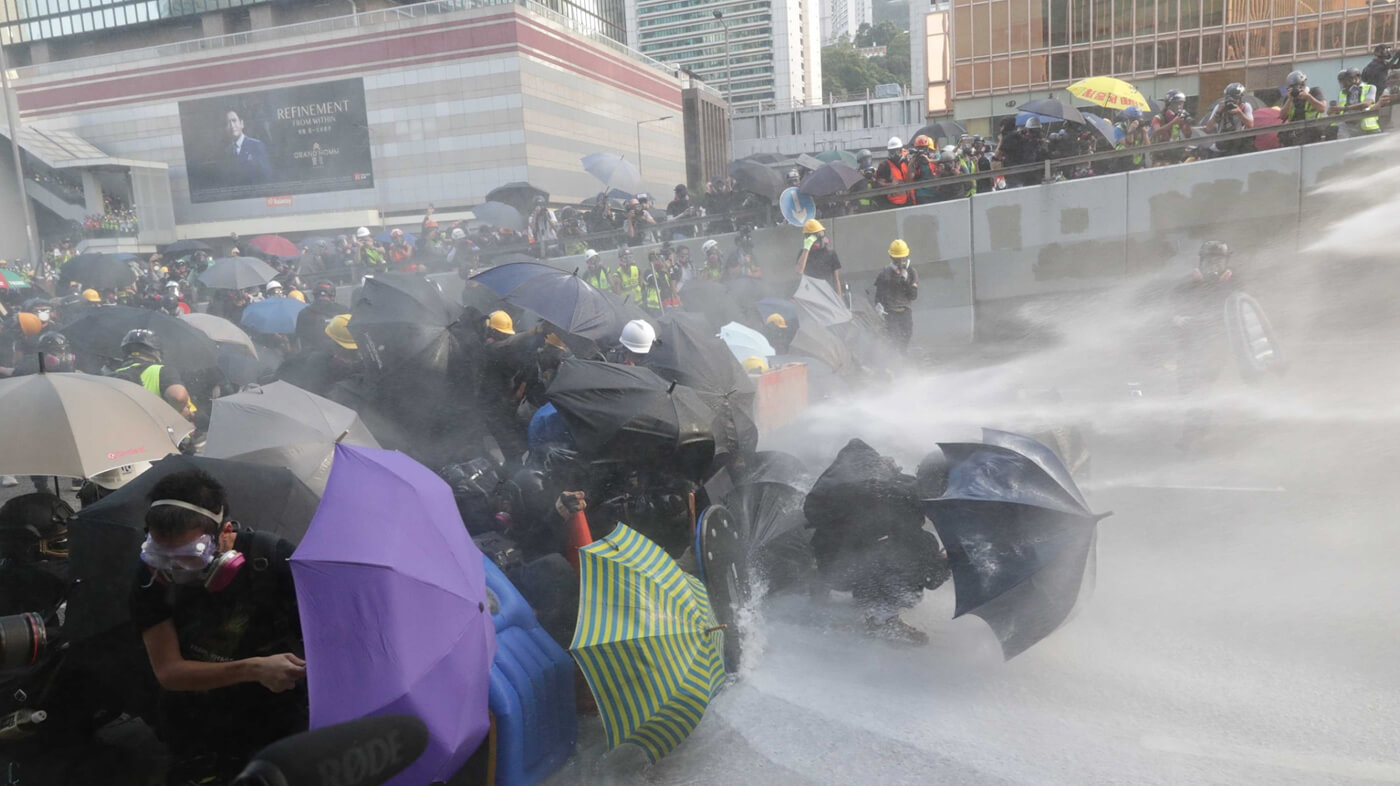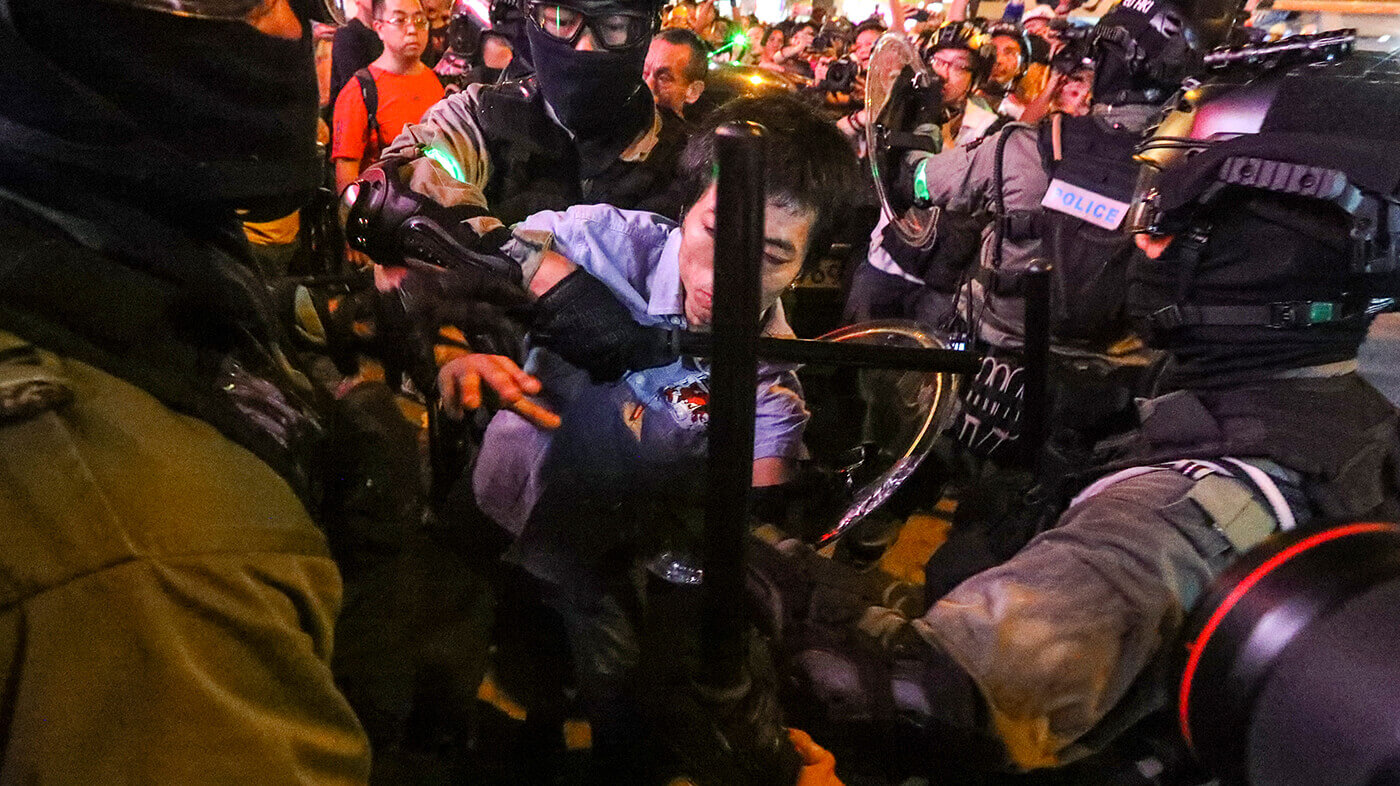PROTEST FROM JUNE 9 TO SEPTEMBER 15
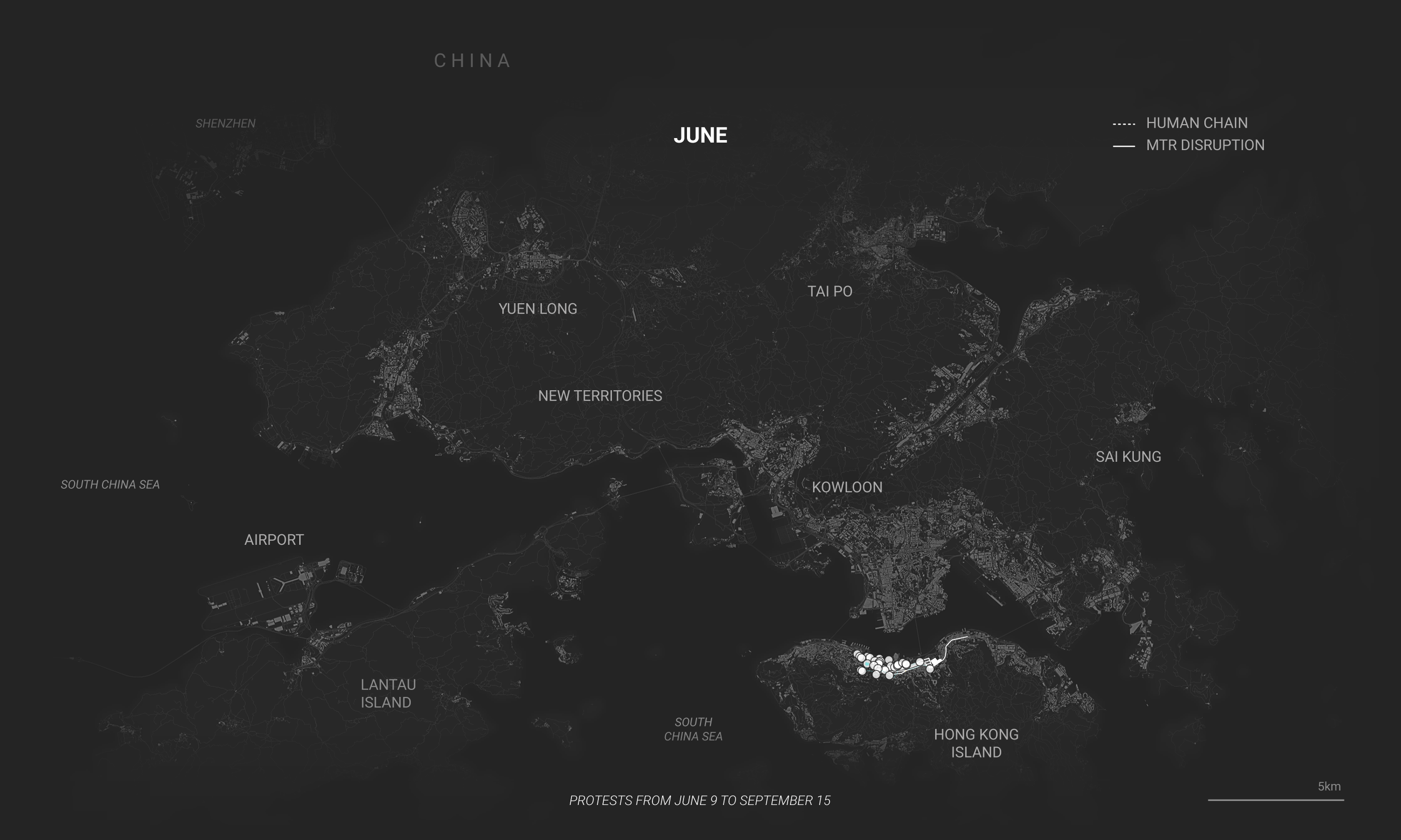
JUNE 9 TO SEPTEMBER 16
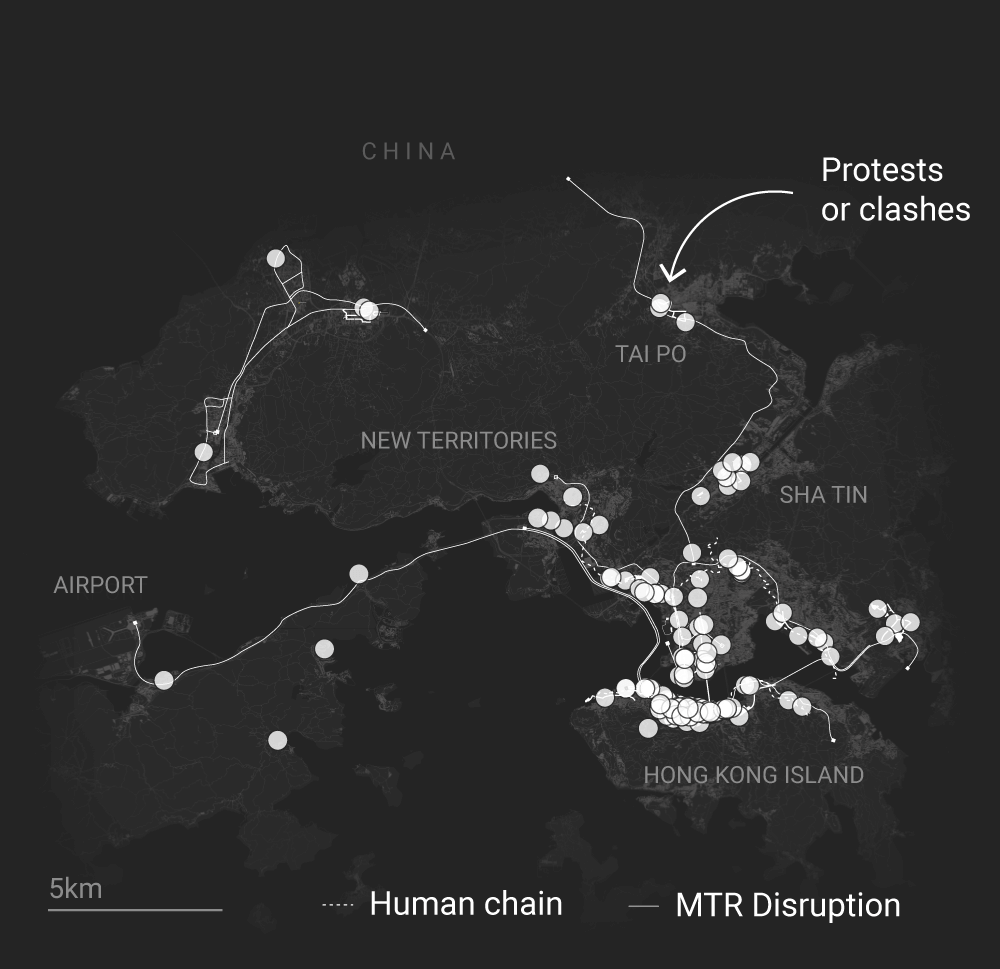

JUNE
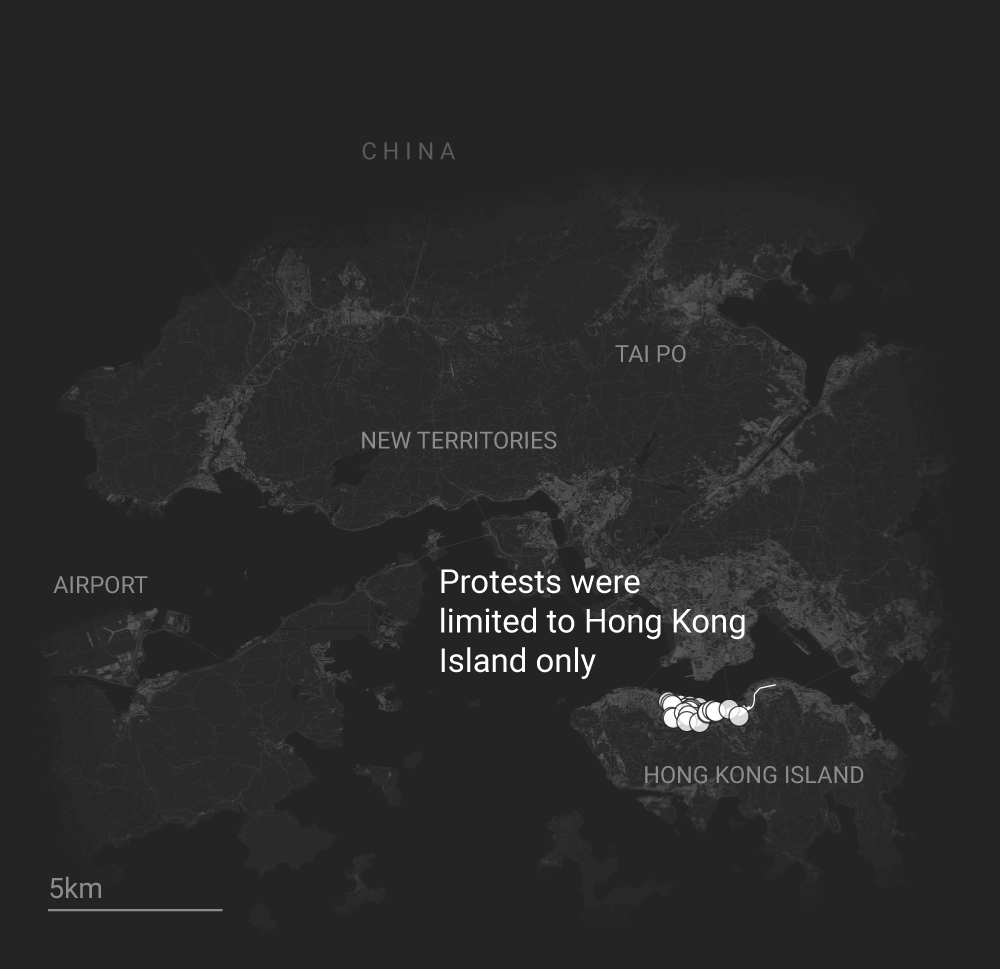

JULY
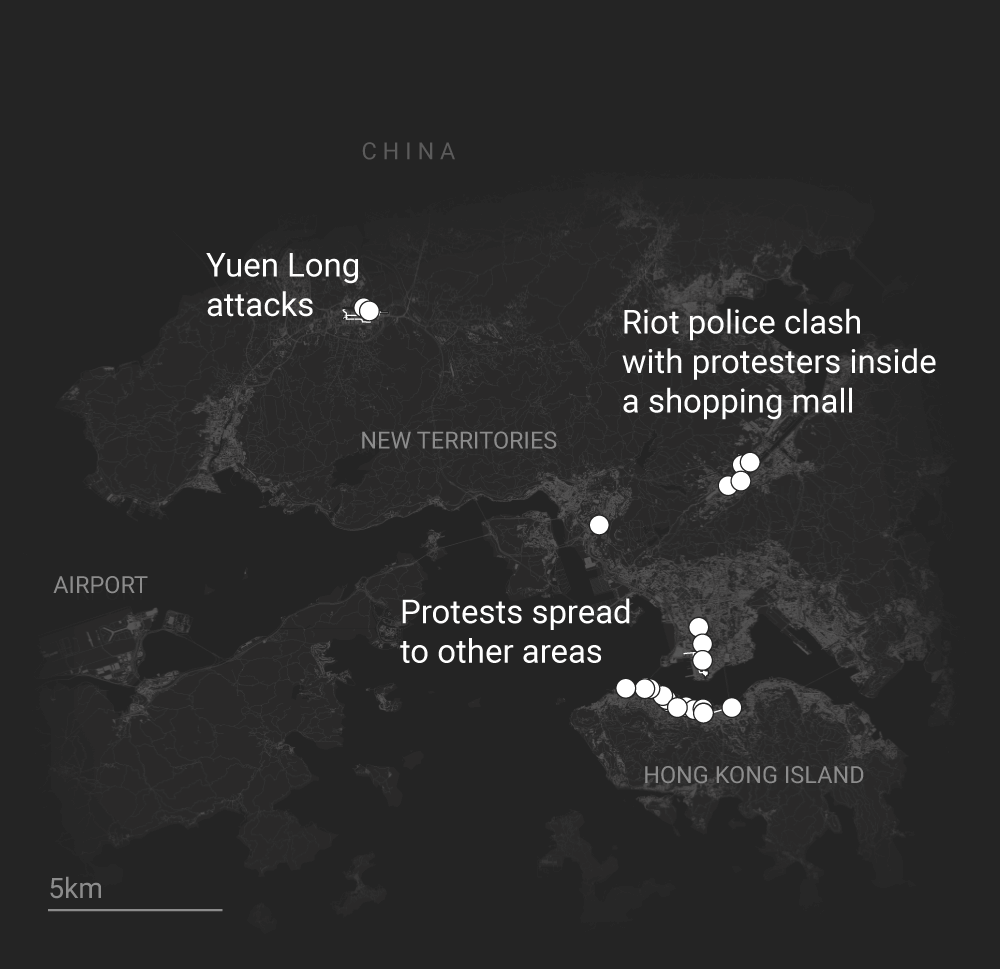

AUGUST
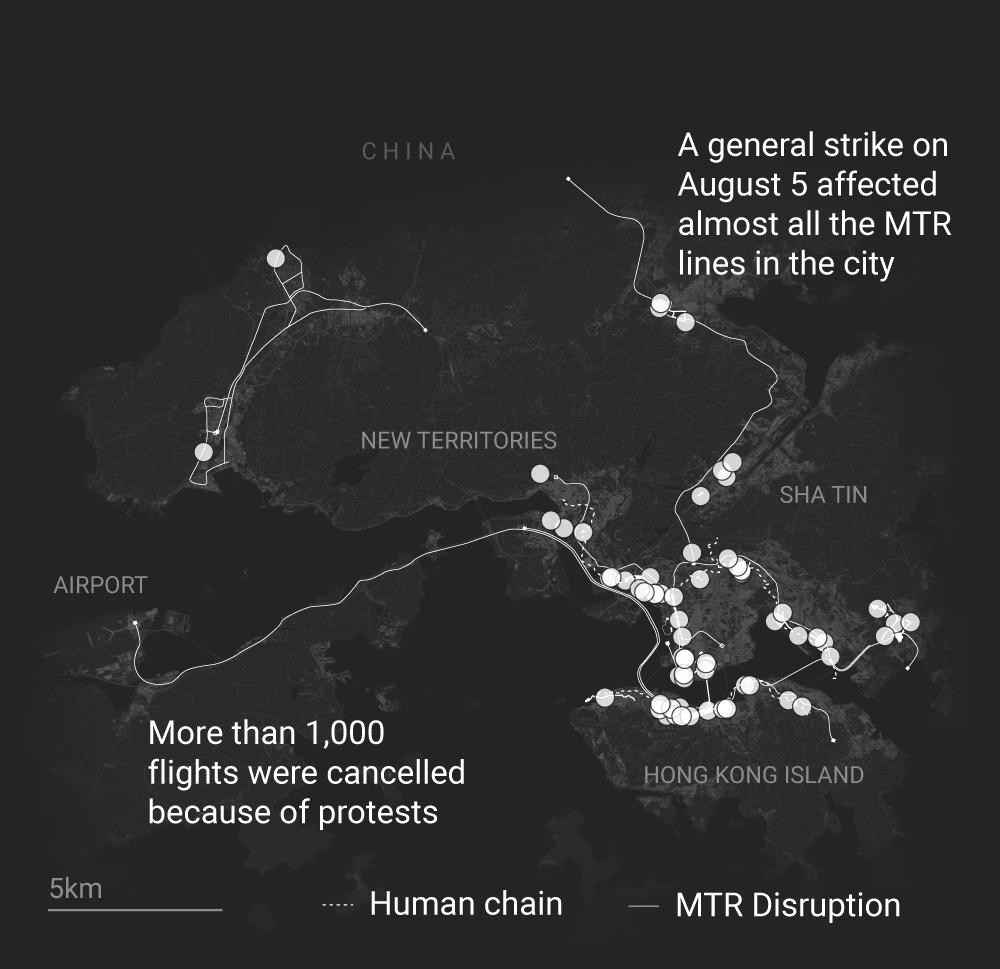

SEPTEMBER



The demonstrations began in opposition to a government bill that proposed a system for case-by-case fugitive transfers between Hong Kong and jurisdictions with which it does not have agreements, including mainland China, where the courts are controlled by the Chinese Communist Party, and Taiwan. The bill was triggered in February 2019, following a murder case in Taiwan when the authorities requested the extradition of a Hong Kong suspect.
ESCALATING VIOLENCE
The protests rapidly gathered momentum from peaceful marches to mass demonstrations before turning ugly on June 12 when clashes between protesters and police resulted in 81 demonstrators and 22 officers being injured and 150 rounds of tear gas being fired.
A few weeks later a general strike brought chaos to the city on August 5. Tensions ran high as scuffles broke out between commuters and protesters, who also clashed violently with police. That day 800 rounds of tear gas were deployed to disperse crowds, almost as many as had been used at earlier protests combined.
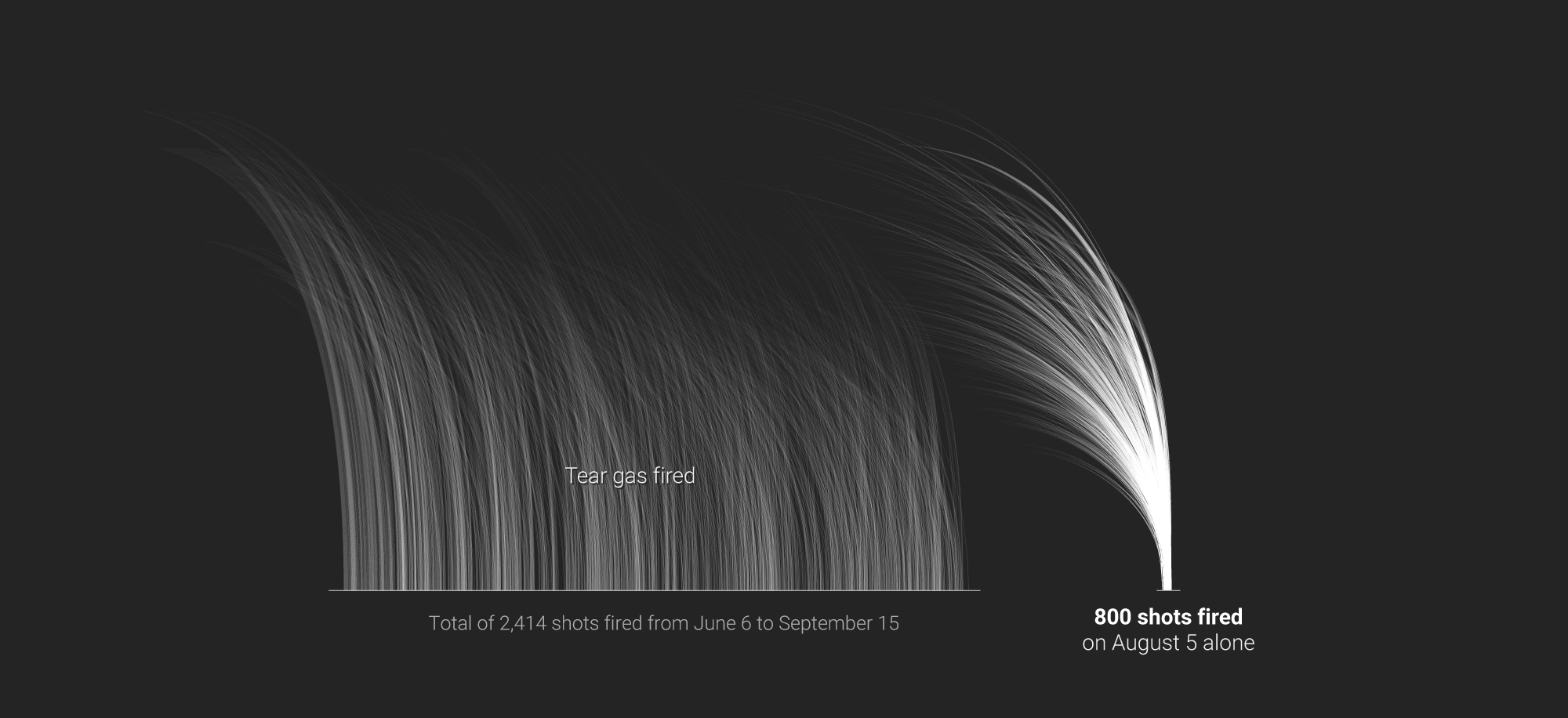
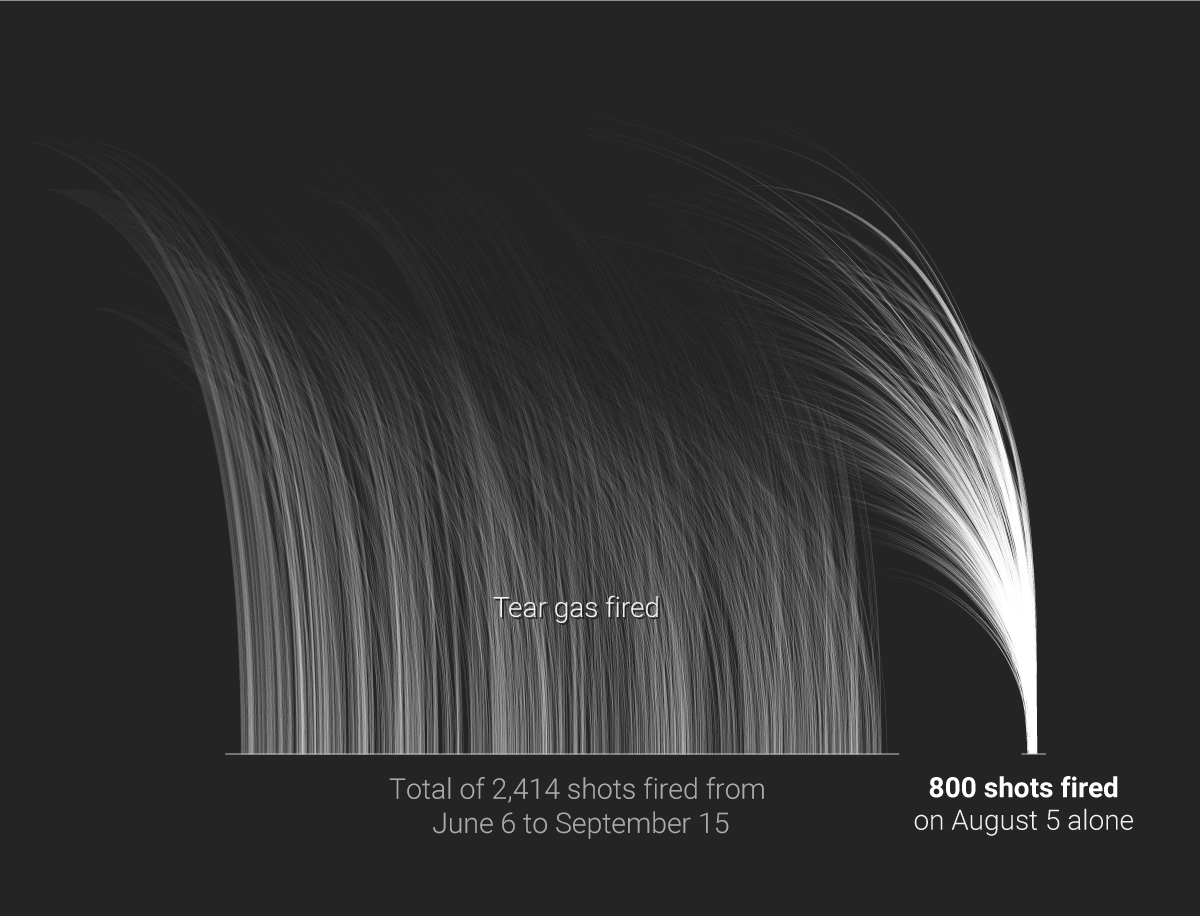
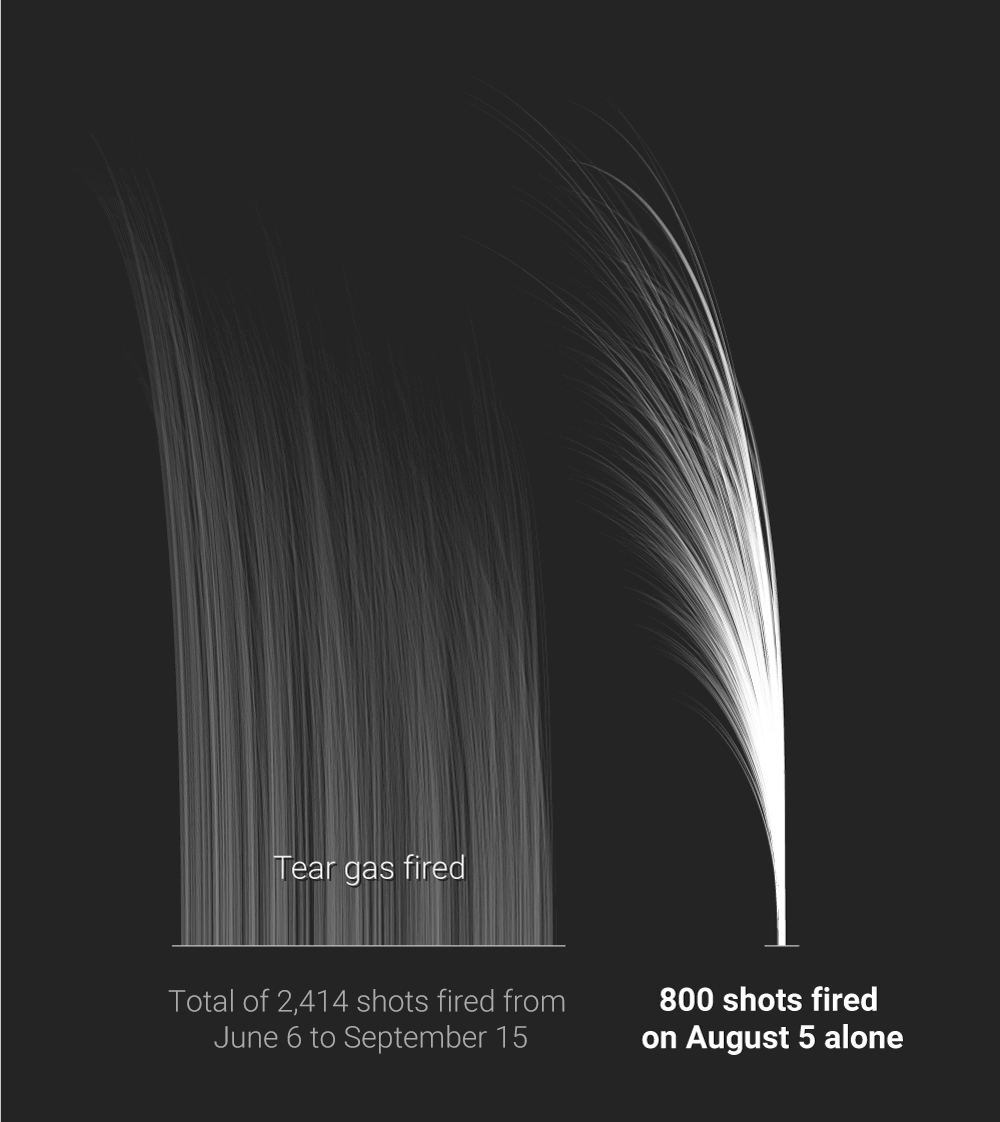
What sparked the protests?
Since the end of British rule in 1997, Hong Kong has operated under the “one country, two systems” principle, with an independent judiciary often cited as its strongest asset. There have been growing concerns in some sections of society about the city’s autonomy after five booksellers disappeared under mysterious circumstances and six legislators were removed from the legislature in 2016 and 2017 for breaching oath-taking rules and regulations. In April this year, four of the 2014 Occupy Central organisers were given jail sentences. The introduction of the extradition bill was seen as the final straw by many lawyers and lawmakers who expressed fears the government would not be able to resist political pressure from Beijing.
The protests began peacefully but there was an escalation of violence from both police and protesters. Here we look at the ebb and flow as the protests lurch between peaceful demonstrations and ugly clashes.
SUNDAY, MARCH 31
AND SUNDAY, APRIL 28, 2019
Organisers said 12,000 people took part in the first protest against the extradition bill. Among the crowd was one of the Causeway Bay booksellers, Lam Wing-kee, who was allegedly kidnapped and detained by mainland authorities in 2015. The second rally took place almost a month later when an estimated 130,000 protesters took to the streets. No clashes or violence occurred at either demonstration.
SUNDAY, JUNE 9
A MILLION PEOPLE MARCH
Organisers estimated more than a million people joined a rally and march demanding the withdrawal of the extradition bill in the largest demonstration since Hong Kong's handover from Britain to China in 1997. Skirmishes broke out after the peaceful public procession ended and activists refused to leave a site near the Legislative Council Complex in Admiralty.
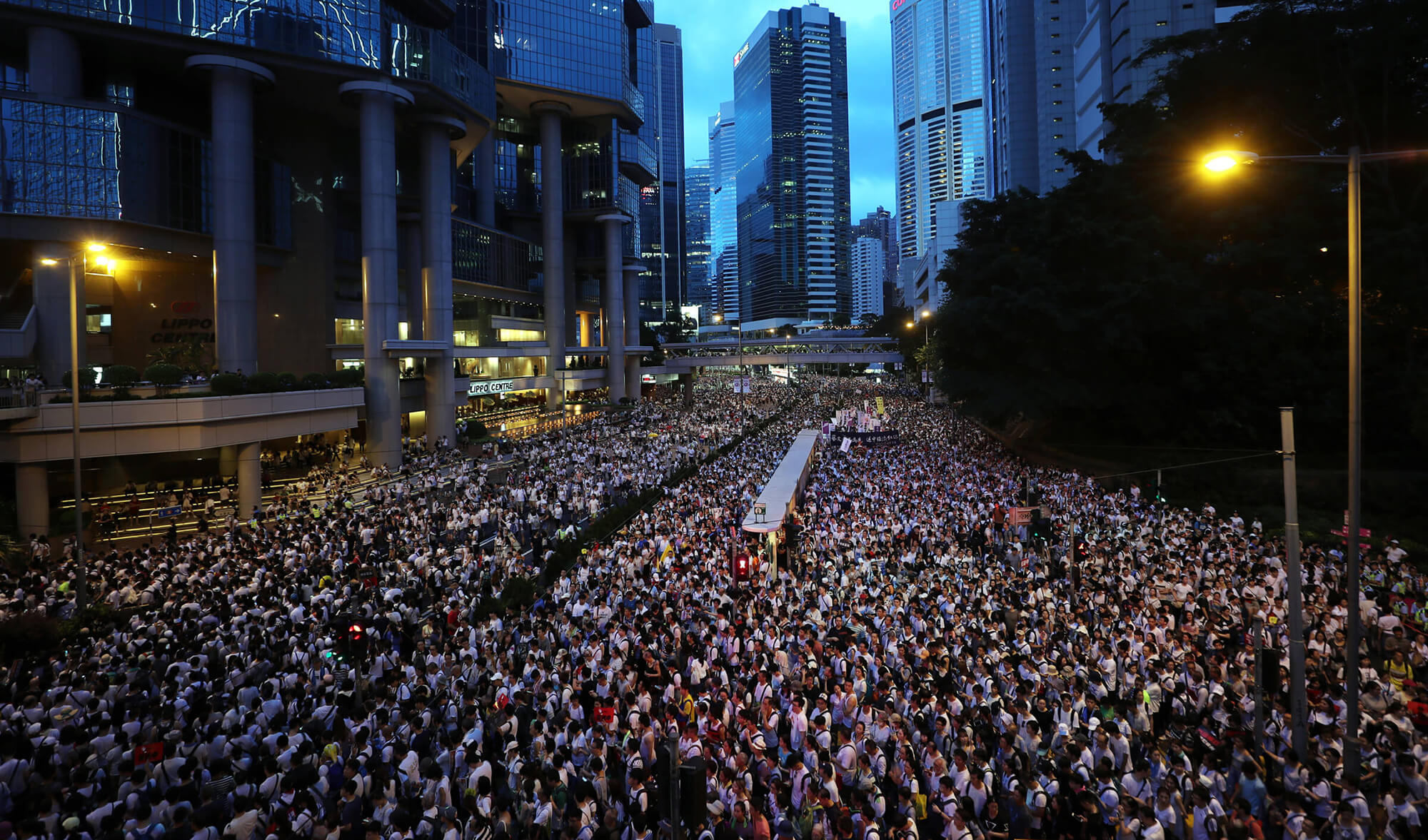
PEPPER SPRAY
The active ingredient in pepper spray is capsaicin, which is a chemical derived from the fruit of plants in the genus Capsicum such as chillies
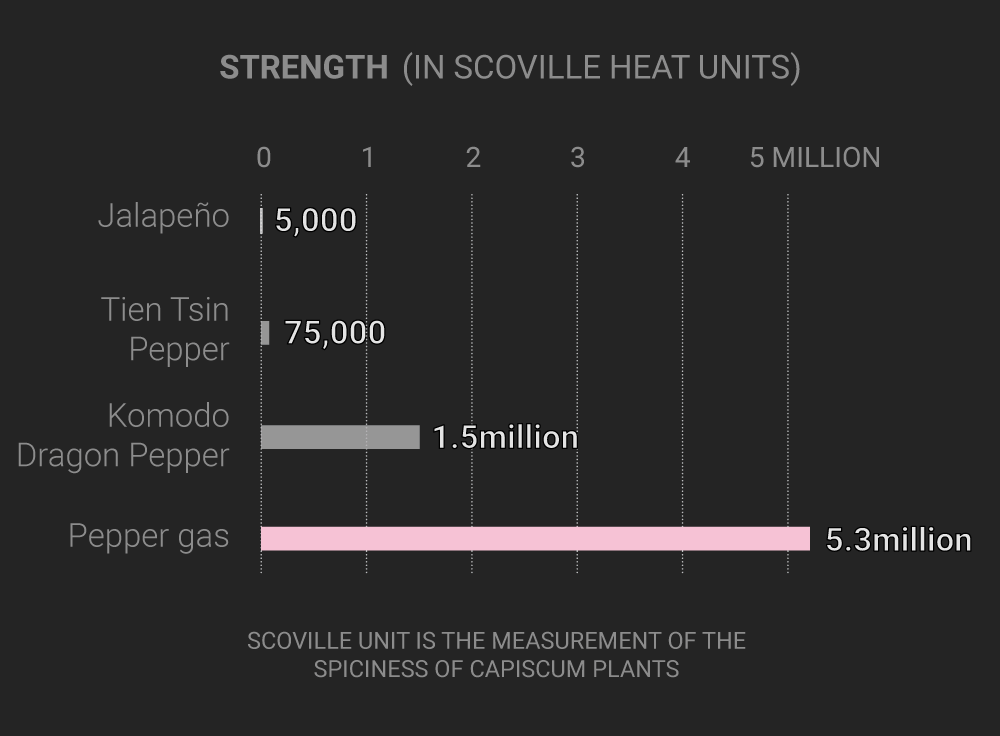
WEDNESDAY, JUNE 12
POLICE ACCUSE PROTESTERS OF ‘RIOTING’
Another rally was organised to disrupt the second reading of the extradition bill which the government refused to withdraw. Tensions peaked around the Legco building where the bill was due to be read. Clashes broke out in the afternoon when a group of protesters blocked roads and attacked the police cordon. Police used pepper spray, rubber bullets and tear gas to disperse demonstrators. Police Commissioner Stephen Lo Wai-chung referred to the clash as a “riot”.
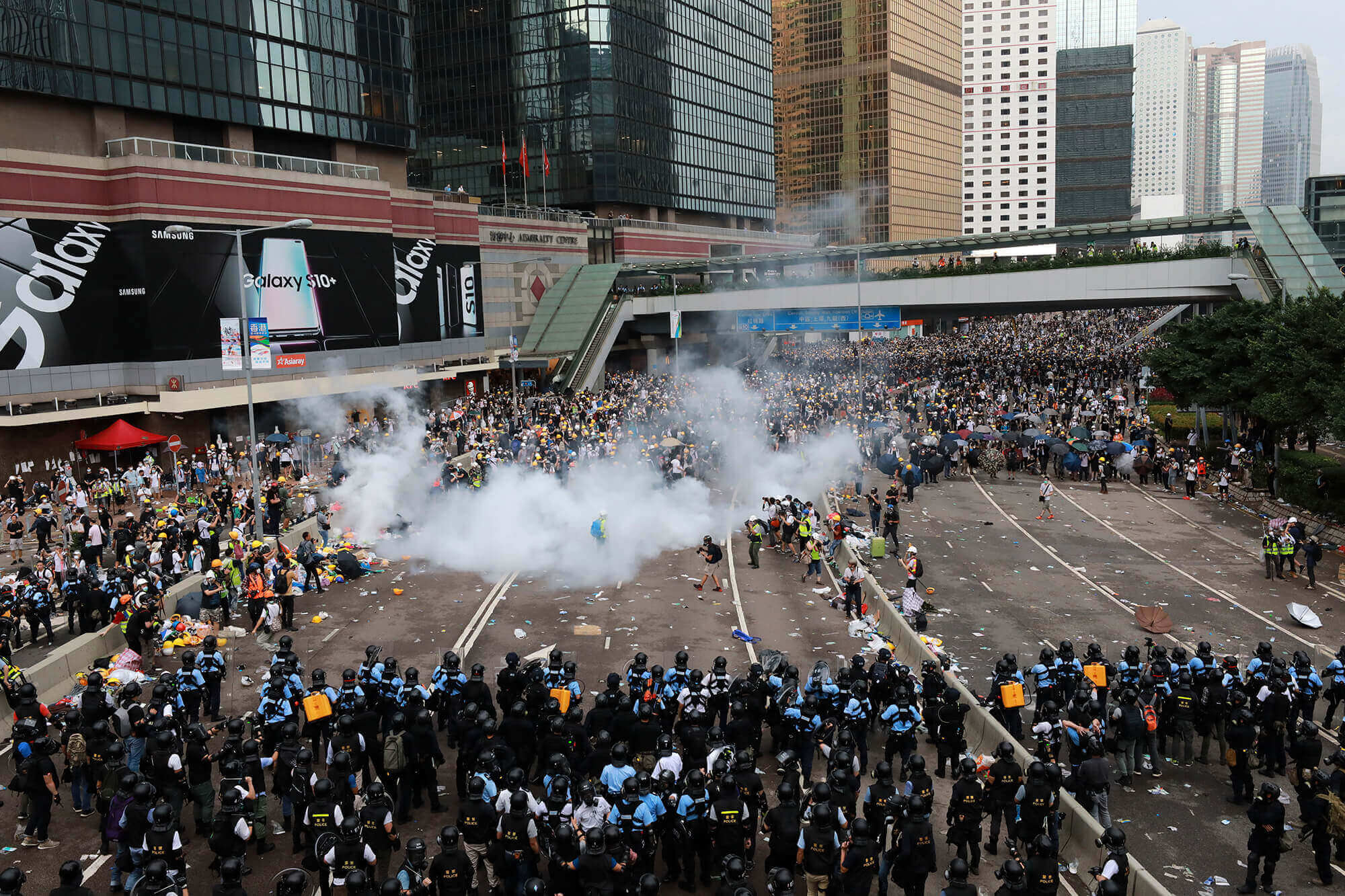
RUBBER BULLETS
Injuries can range from bruising to skull fractures, and even death depending on impact force
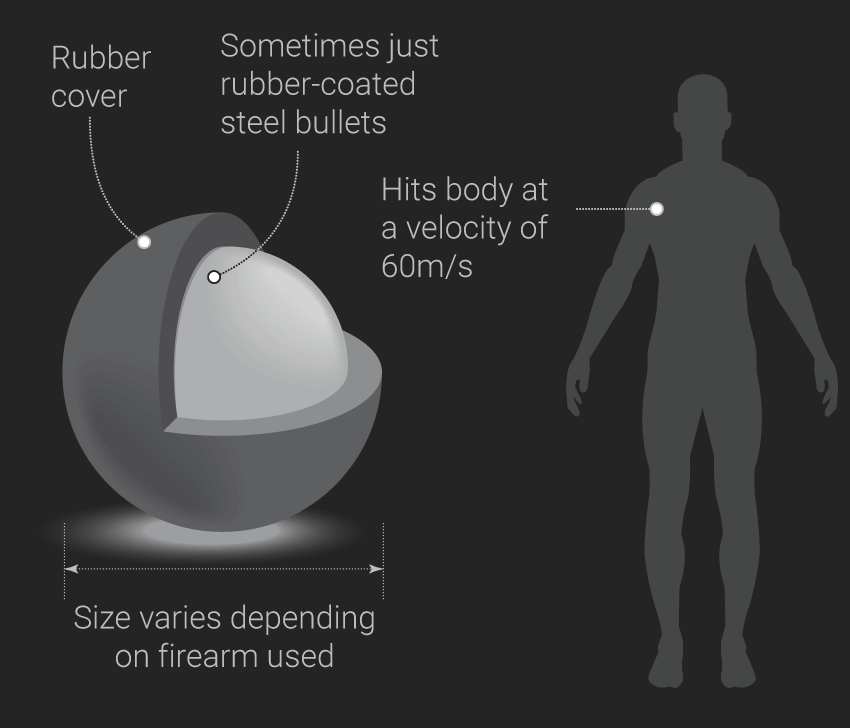
FRIDAY, JUNE 14
Known as the “mothers’ sit-in”, some 6,000 people took part in a three-hour rally at Chater Garden in Central on the evening of June 14. The event was in reaction to a TVB interview where Chief Executive Carrie Lam lamented that as a mother, she would not have indulged “wayward behaviour” of her children. Protesters held up placards with slogans such as “Don't shoot our kids”, and called on the government to retract the bill and for Lam to step down.
SUNDAY, JUNE 16
TWO MILLION TAKE TO THE STREETS
The government announced the “shelving” of the bill on June 15, but the pro-democracy camp demanded a full withdrawal. The June 16 march started ahead of time as record numbers headed to Victoria Park. Residents marched for six hours, calling for the resignation of Chief Executive Carrie Lam, the release of arrested protesters, and the withdrawal of the official characterisation of the June 12 protest as a “riot”. Police said at its peak there were 338,000 marchers while organisers estimated the number to be around 2 million.

FRIDAY, JUNE 21
POLICE HQ BESIEGED
Police maintained a hands-off approach while protesters occupied roads around the city’s administrative and legislative centre before besieging the police headquarters in Wan Chai. Protesters pelted the building with eggs while some staff were trapped inside the building for the entire day and into the early hours.
MONDAY, JUNE 24
Protesters disrupted work at government offices in Wan Chai and blocked the entrance of Revenue Tower. The group then moved to Immigration Tower next door, causing government departments to shut early.
WEDNESDAY, JUNE 26
Hundreds of protesters marched to consulates of 19 of the G20 nations to petition their countries to support their fight against the suspended extradition bill. In the evening, thousands gathered outside City Hall. The protests spilled over into Lung Wo Road, blocking traffic during the evening rush hour.
MONDAY, JULY 1
LEGCO SACKED
Organisers estimated 550,000 people took to the streets, while police said 190,000 were at the peak of the march held to mark the anniversary of Hong Kong’s return to China. The official march passed peacefully but in the afternoon, a large group of masked protesters stormed the Legco building, smashing windows and vandalising the interior by breaking display screens, spraying graffiti on the walls and defacing the Hong Kong emblem. The protesters left following warnings from police.
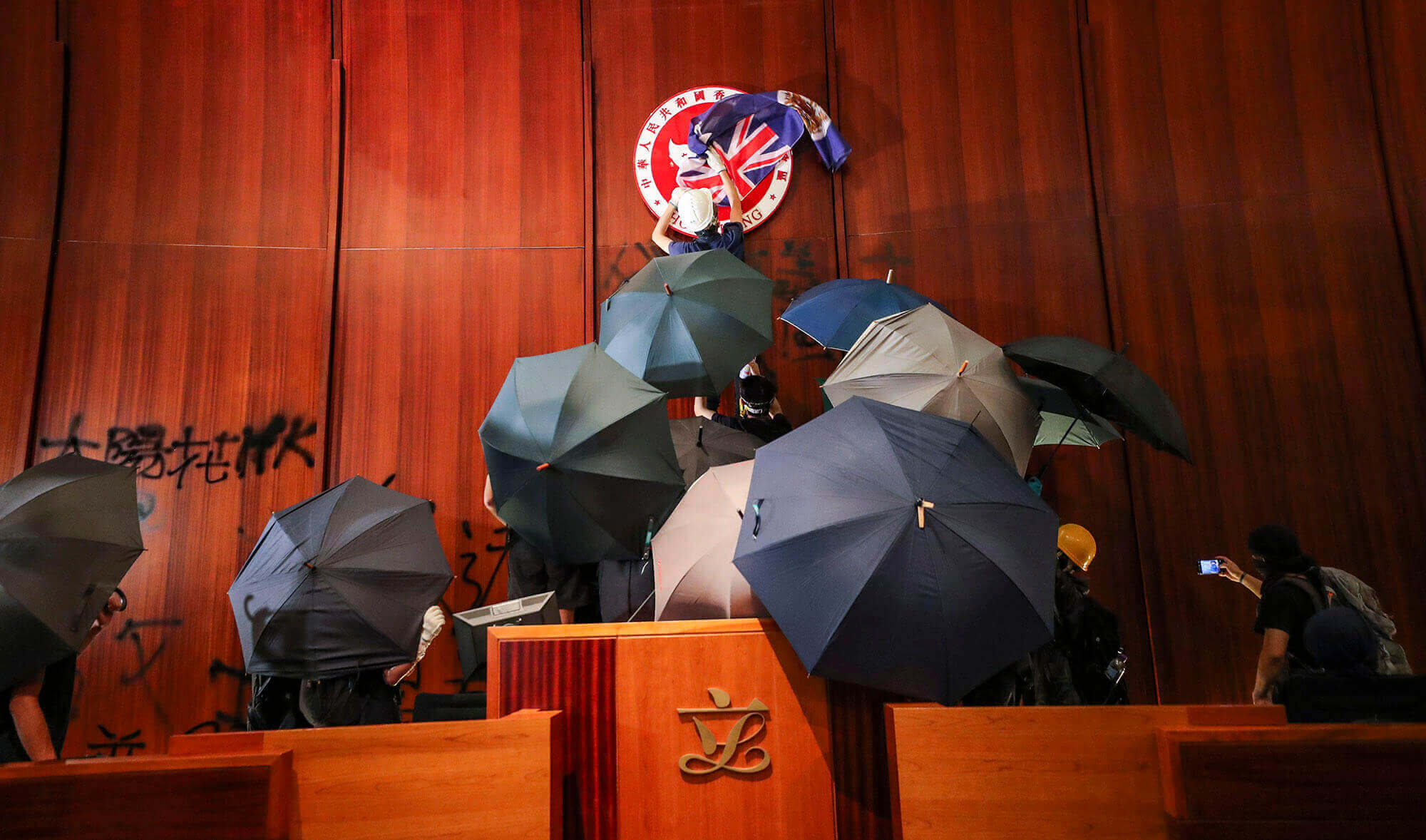
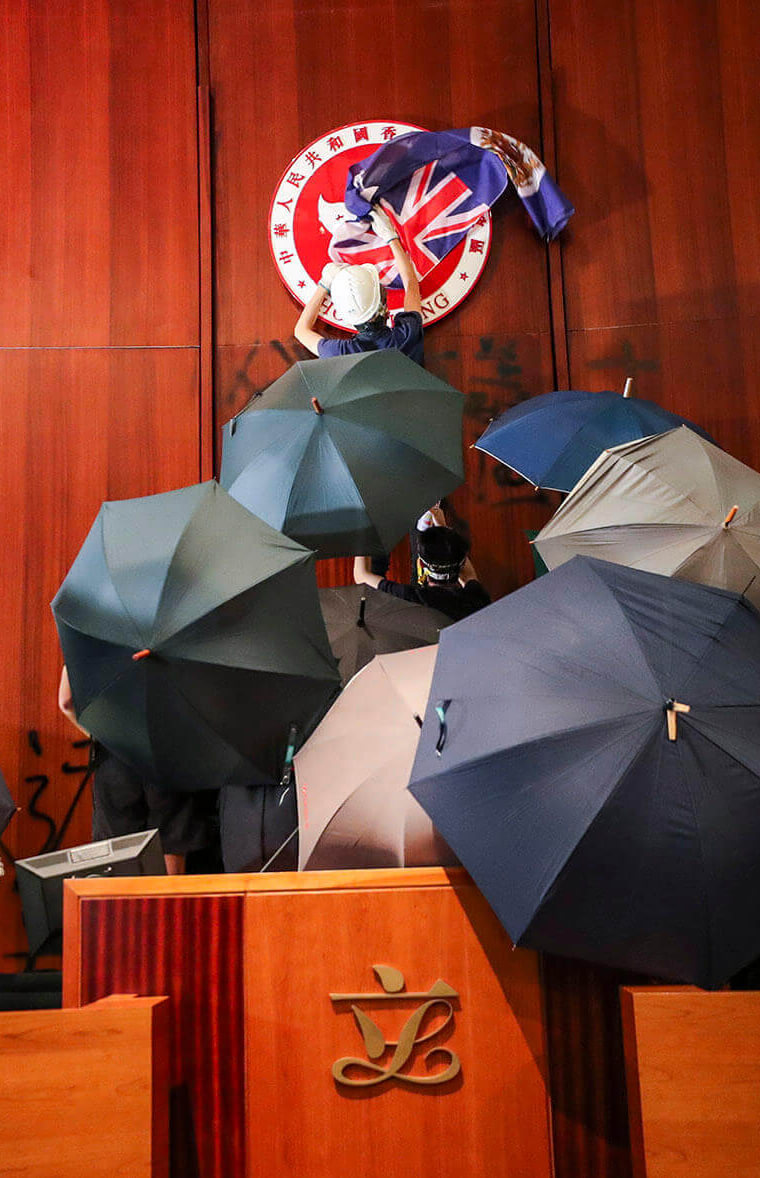
FRIDAY, JULY 5
A second mothers’ rally was held at Chater Garden in Central. Police said 1,300 attended while organisers estimated about 8,000 gathered to show solidarity with the young protesters
SUNDAY, JULY 7
PROTESTS EXPAND TO KOWLOON
Extradition bill protesters took to the streets of Kowloon for the first time in a peaceful official march to the West Kowloon high-speed rail terminal. However, some groups stayed behind to occupy Mong Kok and running battles with police erupted late into the night.
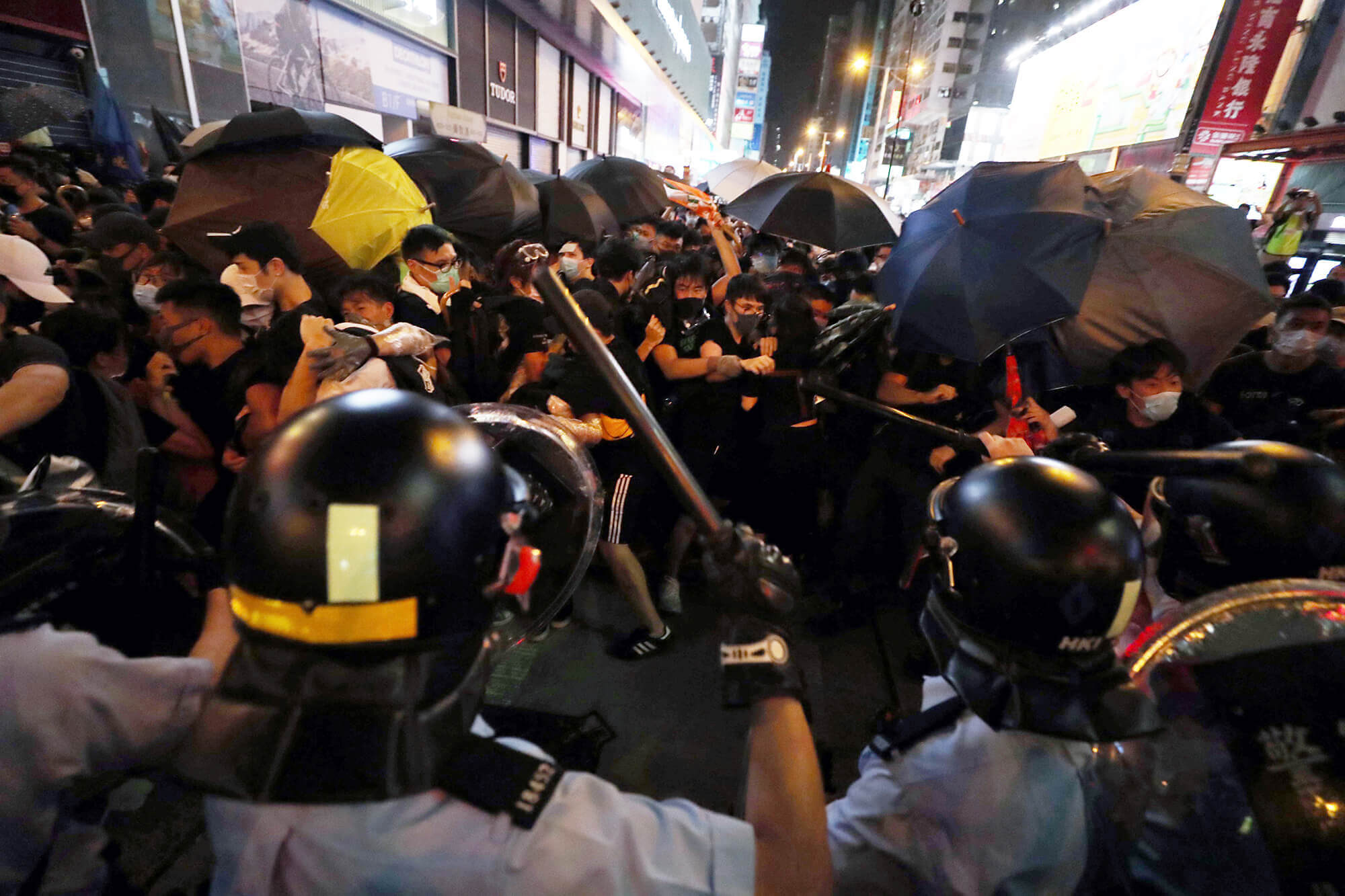
BATON
Body areas police target and level of trauma
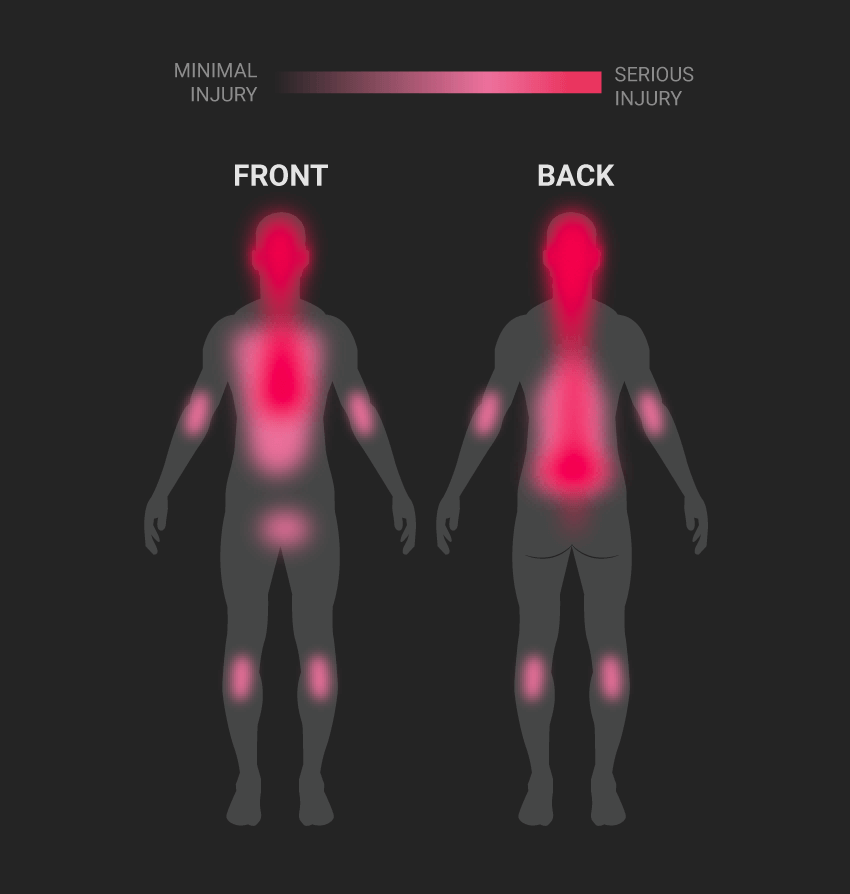
SUNDAY, JULY 14
The protests moved to the New Territories, with a march held in Sha Tin. Violence broke out when protesters began hurling objects at police after the main rally ended. The worst clashes happened later in the evening as protesters and police fought battles in shopping centres and on the streets. Groups of youths in masks and helmets surrounded and assaulted police officers, while protesters were also beaten and pepper sprayed in scenes of chaos across three shopping malls.
SUNDAY, JULY 21
YUEN LONG MOB ATTACK
Three men were detained on the evening before Sunday’s march organised by the Civil Human Rights Front when police seized what they described as the largest amount of deadly explosives ever uncovered in the city.
Organisers said 430,000 people participated in the march while police estimated 138,000 joined at its peak. There were clashes after demonstrators defied police restrictions on the boundaries of the rally. Protesters halted traffic in Admiralty before surrounding Beijing’s liaison office in Sai Ying Pun and vandalised the building. Bricks were thrown through the windows of Central Police Station. Police fired successive rounds of tear gas and advanced on demonstrators who responded by throwing projectiles but eventually dispersed.
In a separate development at Yuen Long MTR station, a group of masked white-clad men wielding iron bars and wooden clubs indiscriminately attacked protesters, journalists and passers-by. At least 45 were injured.
SATURDAY, JULY 27
Thousands of demonstrators joined a rally dubbed “Reclaim Yuen Long” to condemn the mob attack the previous week, despite police objections citing concerns of violence.
Police shielded a village to prevent a confrontation between demonstrators and residents. Officers later used batons, tear gas and pepper spray on protesters throwing stones, using metal poles as weapons and charging police cordons.
SUNDAY, JULY 28
Thousands gathered in Chater Garden in Central for an authorised rally but then an illegal march started. Some headed to Causeway Bay and built barriers from pavement railings. Others headed to Sheung Wan and the liaison office in Sai Ying Pun where clashes occurred. Protesters threw bricks, paint bombs and bottles at police, who responded with tear gas and beanbag rounds. Some protesters set fire to a trolley loaded with cardboard and shoved it towards officers. Others were seen with weapons such as bows and arrows.
TUESDAY, JULY 30
Clashes broke out when a crowd gathered outside Kwai Chung Police Station to wait for the release on bail of 44 suspects charged with rioting.
Tensions also flared as another crowd gathered outside Tin Shui Wai Police Station after two people were arrested for assault and criminal damage at a nearby “Lennon Wall”. At 2.30am, an unknown group shot fireworks from a moving car into the crowd.

THURSDAY, AUGUST 1
AND FRIDAY, AUGUST 2
FLASH MOBS
Hundreds of staff from financial institutions participated in a flash-mob rally at Chater Garden in Central on Thursday night. There *were* no *signs* of police during the protest.
The following evening, organisers of a rally in Edinburgh Place in Central estimated 10,000 health care specialists attended. That was followed by a rally of civil servants in Chater Garden.
SATURDAY, AUGUST 3
FLAG DESECRATED
An approved anti-government march in Mong Kok started peacefully. However, events soon descended into mayhem as marchers departed from the approved route and split in different directions. Some continued to Nathan Road, spilling into Yau Ma Tei and Tsim Sha Tsui.
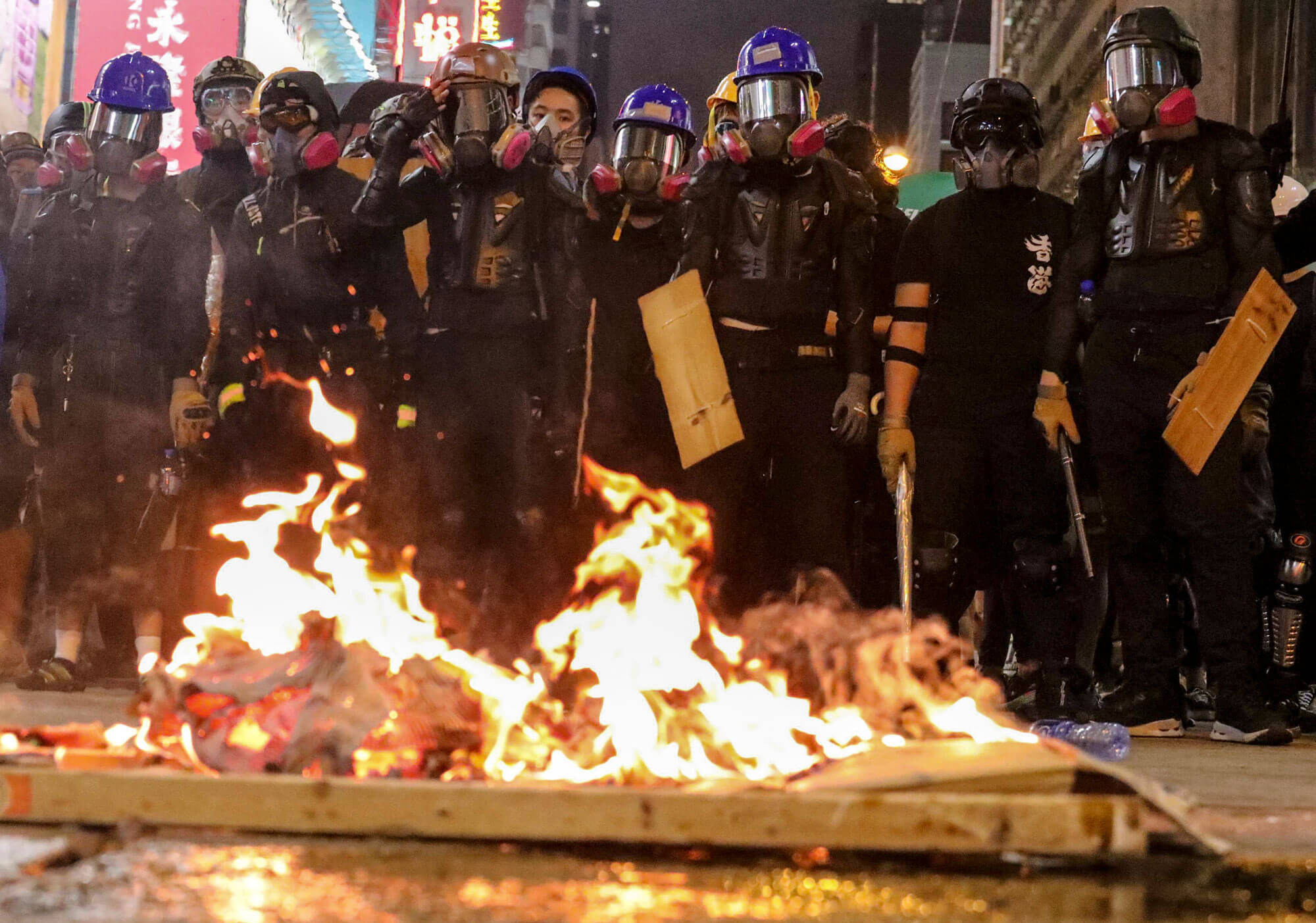
As night fell, radical protesters besieged Tsim Sha Tsui Police Station, defacing the walls with graffiti and starting a fire outside its gates. They also used catapults to lob bricks over the wall at cars parked in the compound and pointed laser beams at officers inside the station. Police used tear gas to disperse protesters who threw petrol bombs.
Earlier, a group of protesters blocked the Cross-Habour Tunnel in Hung Hom while in Wong Tai Sin chaos broke out when hundreds of residents turned on riot police after they used tear gas to disperse protesters in the streets of the densely packed neighbourhood. In Tsim Sha Tsui, four protesters removed the Chinese flag from a pole near the Star Ferry pier and threw it into the harbour.
Meanwhile, thousands showed their support for police at a rally in Victoria Park in Causeway Bay. Pro-establishment group Politihk Social Strategic organised the event themed “Give peace a chance” an estimated 90,000 attended, while police put the figure at 26,000 at its peak.
SUNDAY, AUGUST 4
The day began with an authorised march in Tseung Kwan O but clashes broke off when hundreds of protesters later attacked Wong Tai Sin Police Station. Another rally that began in Kennedy Town ended in tear gas being fired early in the evening before protesters headed to Causeway Bay to block roads and halt trams. Police used tear gas as protesters launched bricks and other projectiles at them over a barricade.
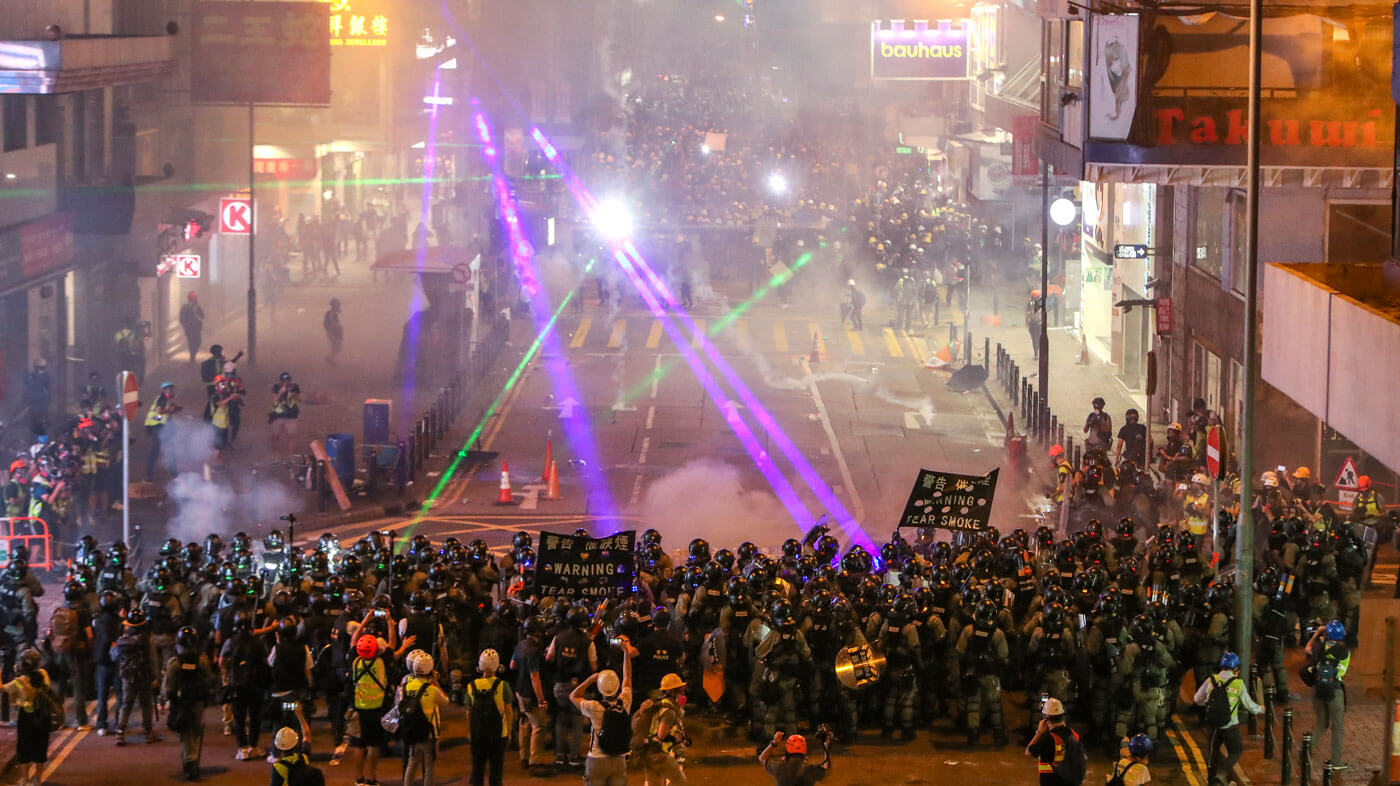
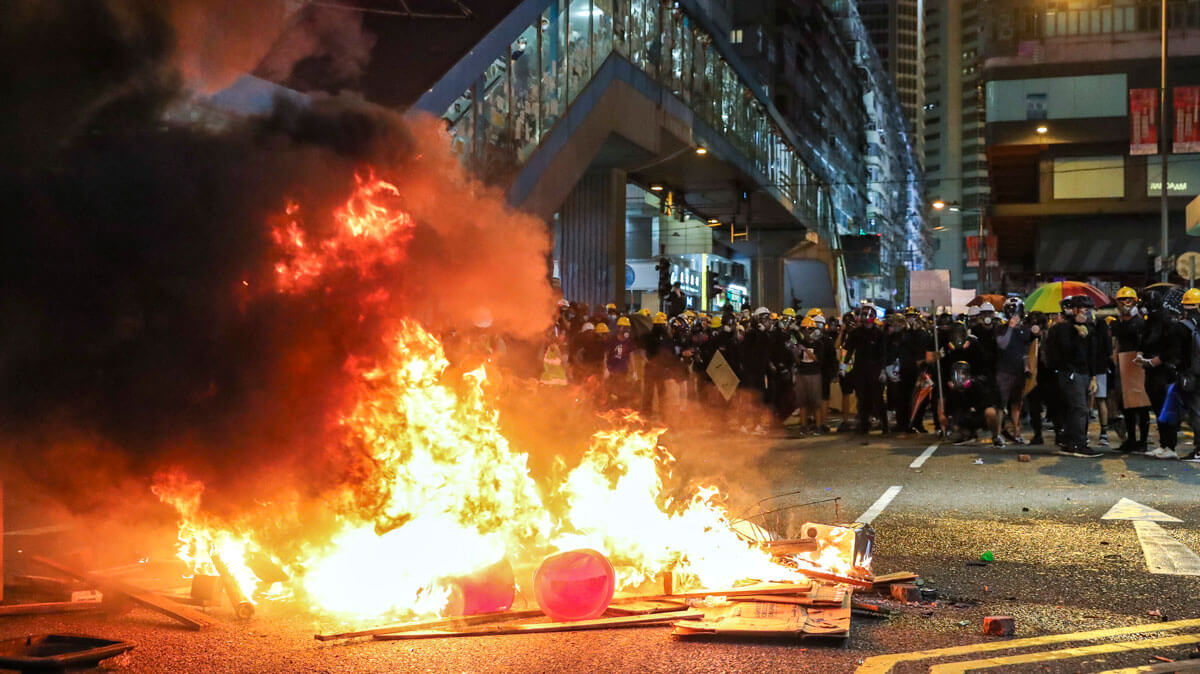
MONDAY, AUGUST 5
GENERAL STRIKE
A citywide general strike resulted in chaos for morning commuters. There were major disruptions on the MTR, road closures, and cancellations and delays affecting Hong Kong International Airport. At least seven major rallies were held throughout Hong Kong where stand-offs between police and demonstrators developed.
MTR DISRUPTIONS
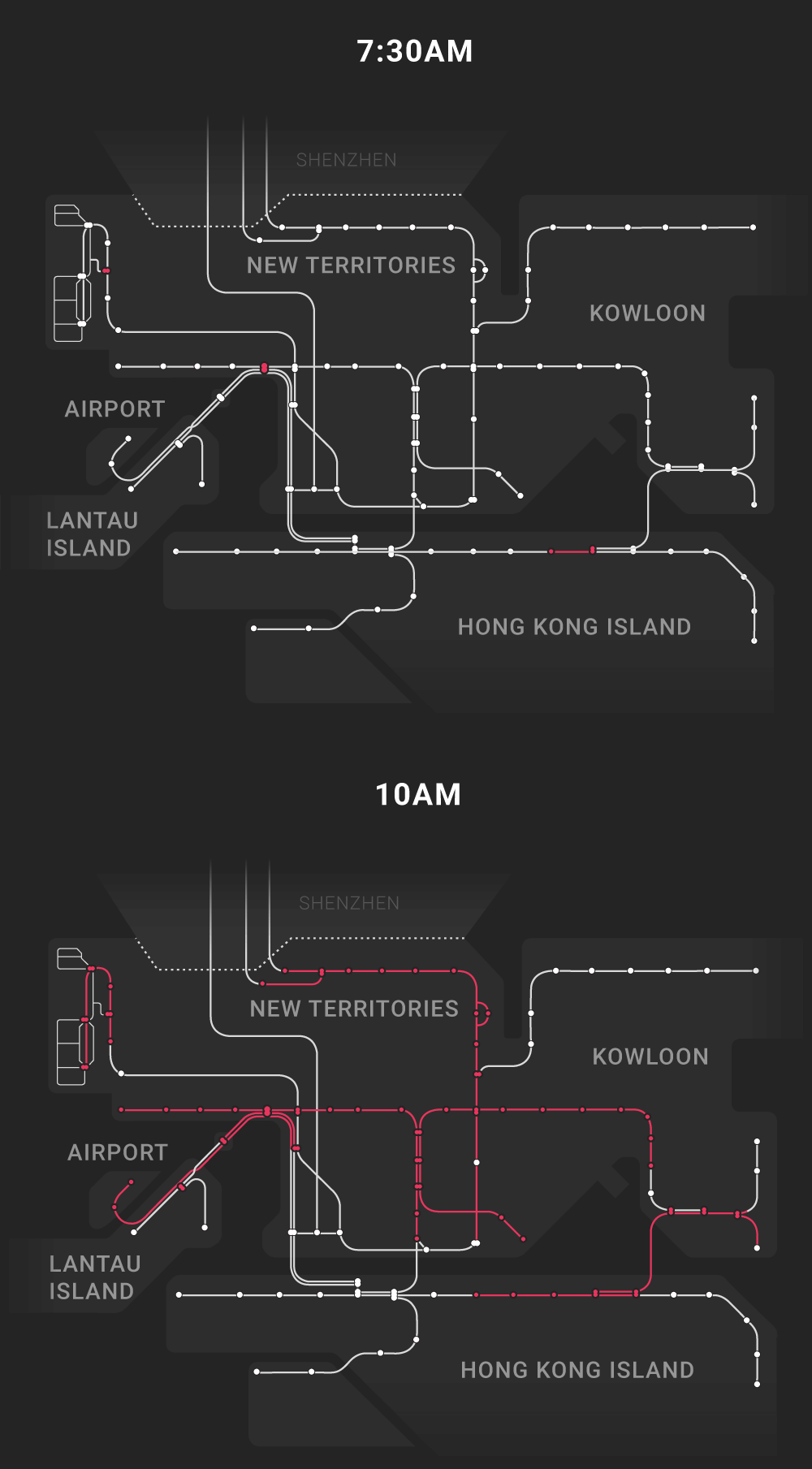
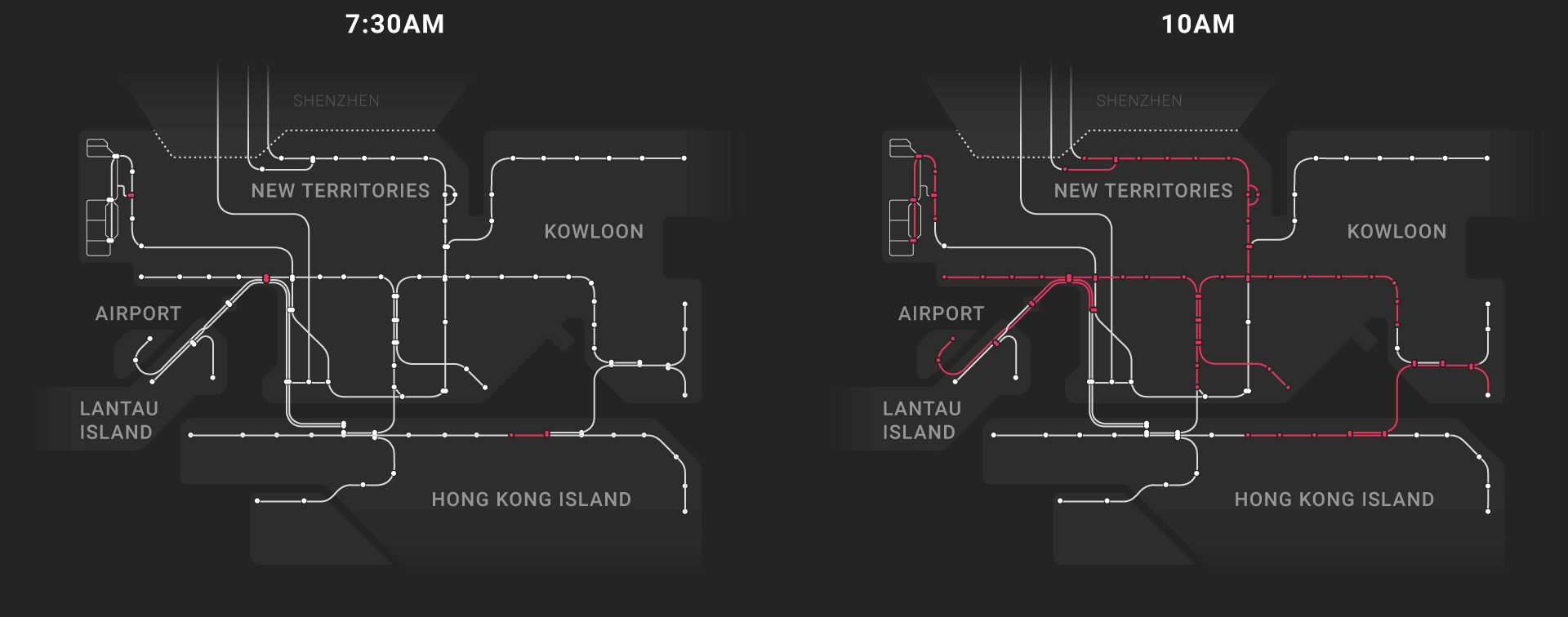
Clashes flared up and died down as protesters kept on the move to thwart police. When officers fired tear gas near the legislative building at crowds filling Harcourt Road protesters moved on to Causeway Bay where they threw bricks and projectiles at police.
A DAY OF FURY
Some protesters then headed to Kowloon where skirmishes continued late into the night. Others headed to North Point where scuffles broke out between protesters and a mob armed with large sticks.
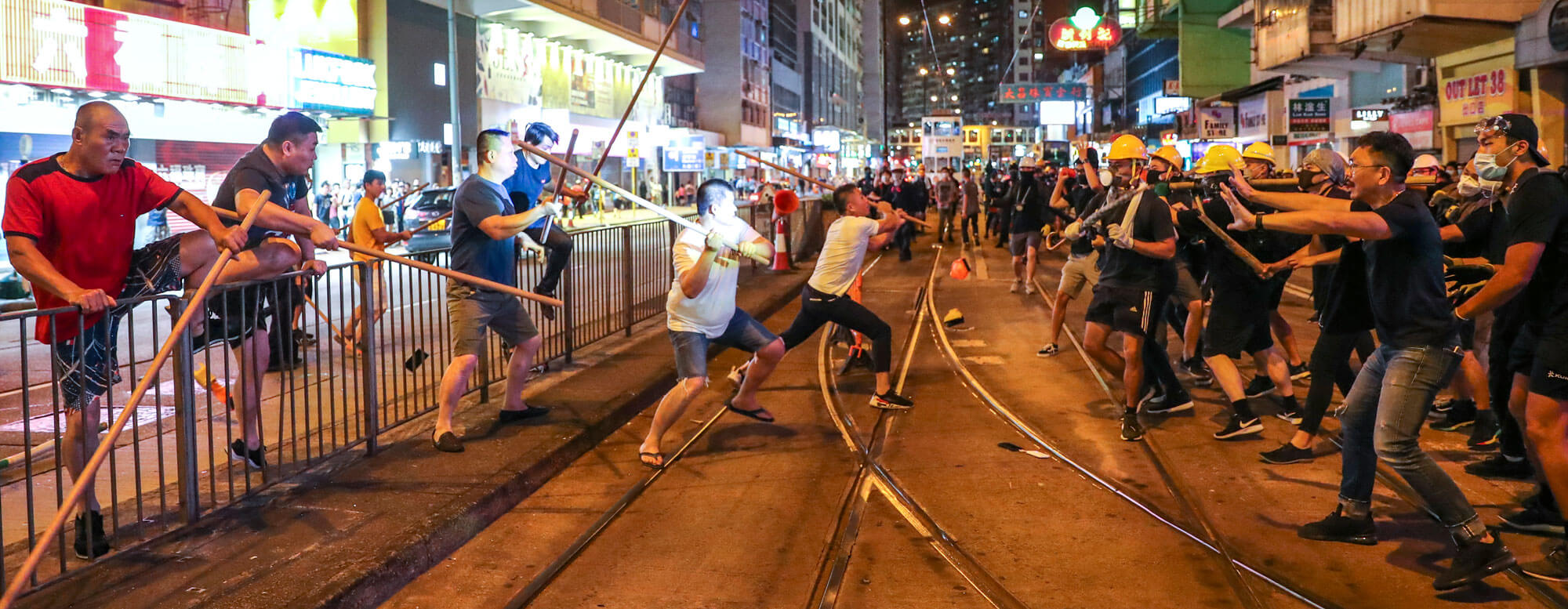

TUESDAY, AUGUST 6
LASER POINTERS ‘WEAPONISED’
More than 1,000 protesters besieged Sham Shui Po Police Station, demanding the release of a student leader who was arrested for possession of offensive weapons. He was stopped by off-duty officers after buying 10 laser pointers, a tool police said people had used to attack them. Officers later fired about 20 rounds of tear gas to disperse the crowd, who sprayed paint on the station’s walls, and hurled bricks and glass bottles into the complex.
WEDNESDAY, AUGUST 7
Hundreds gathered outside the Hong Kong Space Museum in Tsim Sha Tsui at night, shining laser beams on its dome to protest against the arrest of the student leader for possessing handheld pointers which police referred to as “laser guns”.
Earlier, thousands of lawyers staged a “black clothes” march to criticise Secretary for Justice Teresa Cheng, who they accused of selective prosecution after she reportedly gave police verbal, rather than written, authorisation to fast-track the charging of protesters with rioting.
FRIDAY, AUGUST 9
Hundreds joined a mass sit-in at Hong Kong International Airport in a fresh round of protests designed to highlight the movement to the international community.
Protesters distributed leaflets to travellers in the airport’s arrival hall explaining their main demands. Elsewhere, police in Wong Tai Sin arrested five people who had been “burning offerings to ghosts” in a satirical protest against the authorities.
SATURDAY, AUGUST 10
Peaceful “family” and “silver hair” rallies were held early in the day, in stark contrast to later events. Activists gathered at Tai Po bus station despite an official march having been called off after police refused to issue a letter of no objection. Marchers passed through the original endpoint to confront officers guarding Tai Po Police Station, while others headed to Sha Tin’s New Town Plaza.
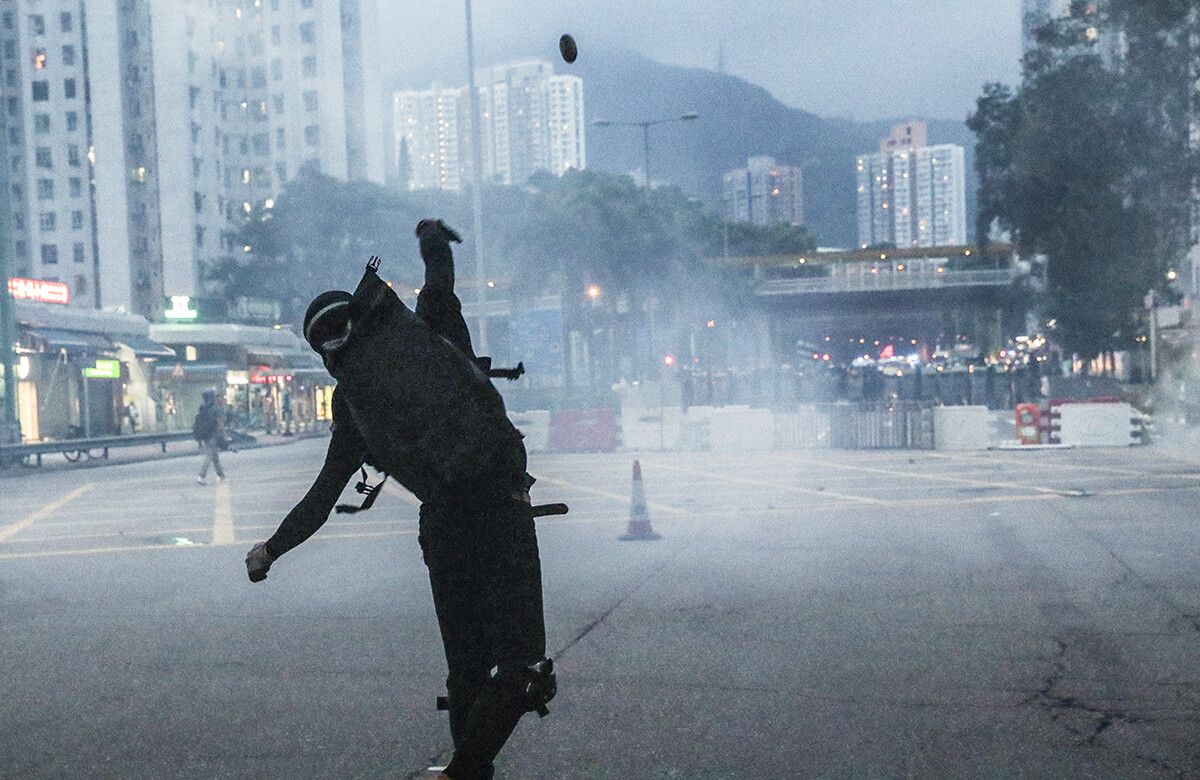
In the evening, clashes occurred in at least seven districts with riot police firing tear gas in Tai Wai and Tsim Sha Tsui while some protesters threw petrol bombs and set up makeshift barricades.
SUNDAY, AUGUST 11
PROTESTER FEARED BLINDED
Police restricted protests to a static rally in Victoria Park but crowds soon headed out to take over roads in Causeway Bay and Wan Chai. Elsewhere, protesters assembled in Sham Shui Po while angry residents gathered in areas such as Shau Kei Wan, Sai Wan Ho and outside Sha Tin Police Station. Tensions were high in North Point where clan reinforcements from mainland China and the Philippines were rumoured to be waiting for a confrontation with protesters.
Tsim Sha Tsui was turned into a battlefield after protesters hurled petrol bombs and bricks and police responded with tear gas and baton charges. A female protester was hit in the eye by a projectile and seriously injured, with both sides accusing the other of being responsible. Clashes intensified across Hong Kong. Police fired tear gas into the concourse of Kwai Fong MTR station before charging at protesters and opening fire with pepper balls at close range. At Tai Koo station, riot police charged inside and beat protesters with batons on moving escalators.
In a change of tactics, undercover police posed as protesters and arrested “extremely violent rioters” in Causeway Bay.
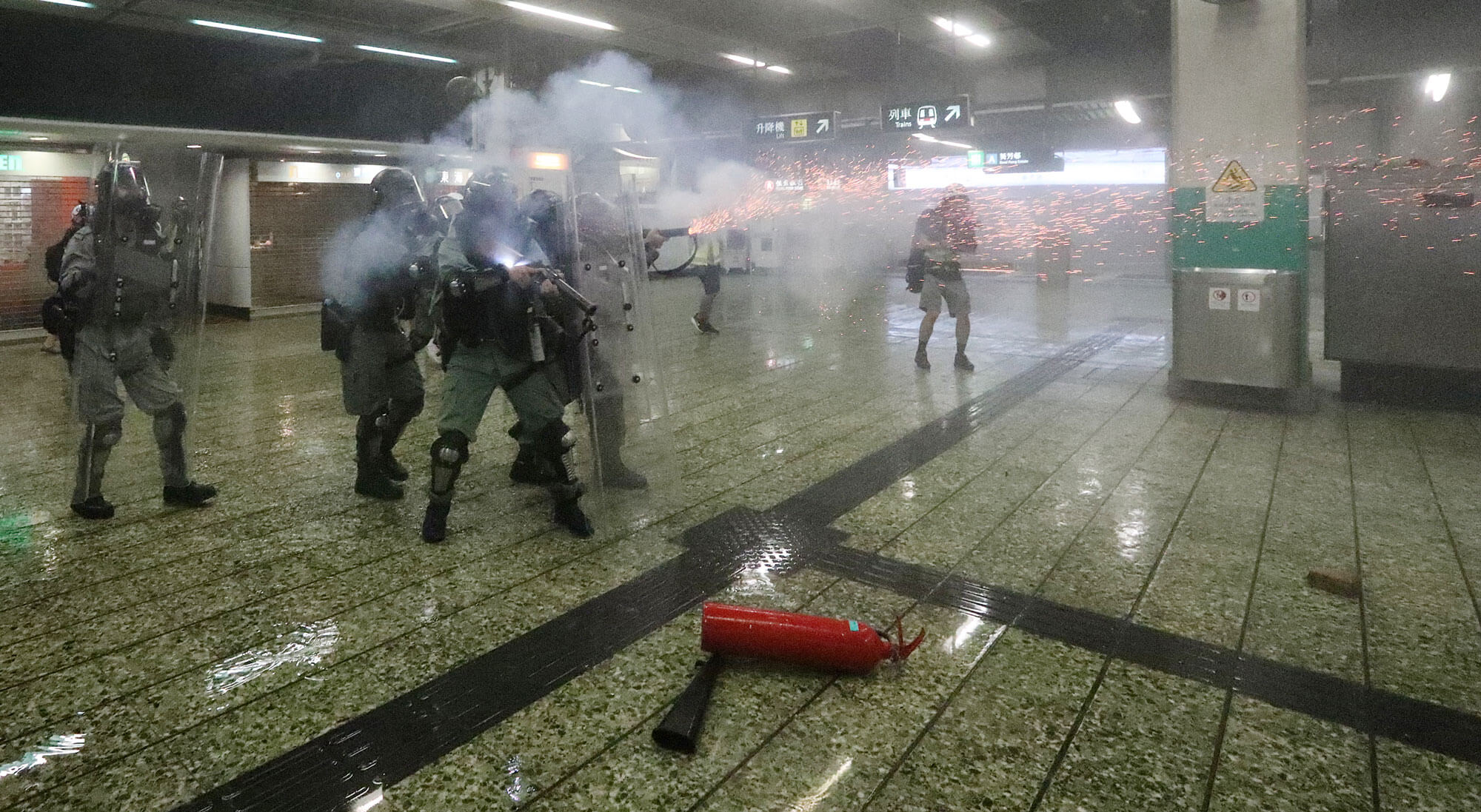
TEAR GAS
The projectiles used by riot forces are 37mm to 40mm
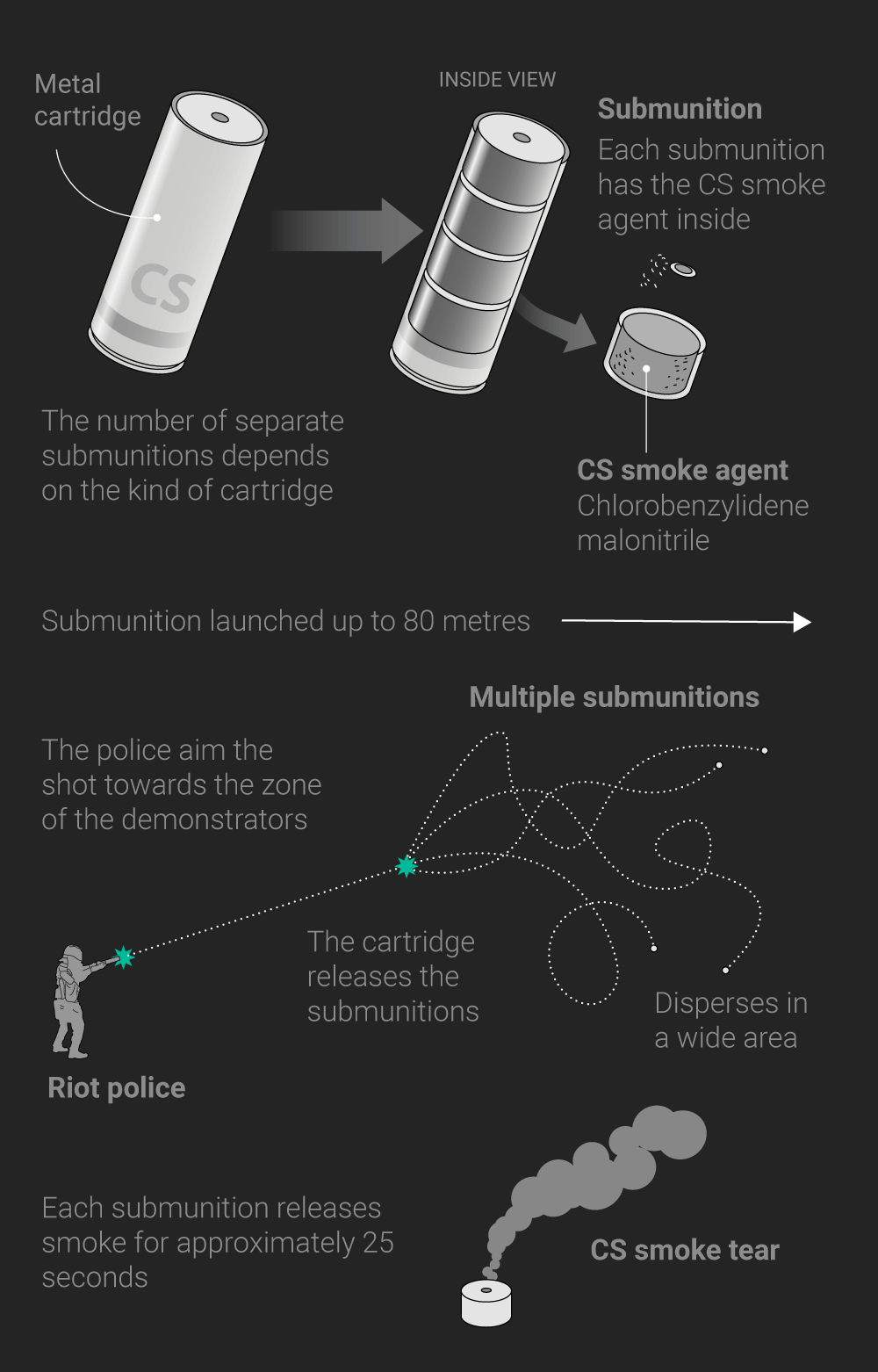
MONDAY, AUGUST 12
AIRPORT PARALYSED
Thousands more protesters descended on Hong Kong International Airport in a bid to paralyse one of the world’s busiest aviation hubs. Demonstrators wanted to protest at the escalation of violence over the weekend. By 4pm all departures were cancelled.
Many passengers opted to walk to the nearest train station 3km away because of severe crowding on the airport’s bus and train services. Many protesters followed suit as rumours spread that police planned to move in that evening.
CANCELLED FLIGHTS GO GLOBAL
TUESDAY, AUGUST 13
Anti-government protesters returned to the airport, flooding the departure hall. More than 300 flights were cancelled as part of the fallout from Monday’s chaos. The Airport Authority was forced to suspend flights again before obtaining a court order stopping people from unlawfully and wilfully obstructing or interfering with the proper use of the airport.
There were unprecedented scenes of chaos at the airport that evening as protesters assaulted and detained two mainland Chinese men. There was more trouble outside the terminal as protesters turned on police.
FRIDAY, AUGUST 16
AND SATURDAY, AUGUST 17
Thousands of students gathered in Chater Garden in Central on Friday night.
Organisers said 476,000 attended a pro-police rally at Tamar Park in Admiralty. Police put the turnout at 108,000. Among them were some property tycoons. Elsewhere, teachers marched in support of young protesters in the morning. That evening, protesters gathered outside Mong Kok Police Station but the crowds had largely dispersed by 8pm.
SUNDAY, AUGUST 18
Organisers estimated 1.7 million protesters gathered in Victoria Park and marched along the main thoroughfares of Hong Kong Island. Police put the figure at 128,000 at the march’s peak. Whatever the number, Hong Kong recorded three straight days of demonstrations with no clashes between protesters and police.
FRIDAY, AUGUST 23
THE HONG KONG WAY
Organisers estimated more than 210,000 people joined hands in a series of human chains measuring a total of 60km in an event dubbed the “Hong Kong Way”.
SATURDAY, AUGUST 24
More than 1,000 people attended an approved march in Kwun Tong calling for the full withdrawal of the extradition bill and demanding an explanation over “smart lamp posts” along the route.
Demonstrators clashed with police and threw petrol bombs in Telford Plaza mall in Kowloon Bay. Police fired tear gas outside Ngau Tau Kok Police Station after protesters threw projectiles at them. Trouble also broke out in Wong Tai Sin and Sham Shui Po.
SUNDAY, AUGUST 25
WATER CANNONS DEPLOYED, LIVE SHOTS FIRED
Soon after an approved march from Kwai Chung Sports Ground began, some demonstrators broke off to build barricades. They then squared off against riot police who arrived to reopen the road to traffic.
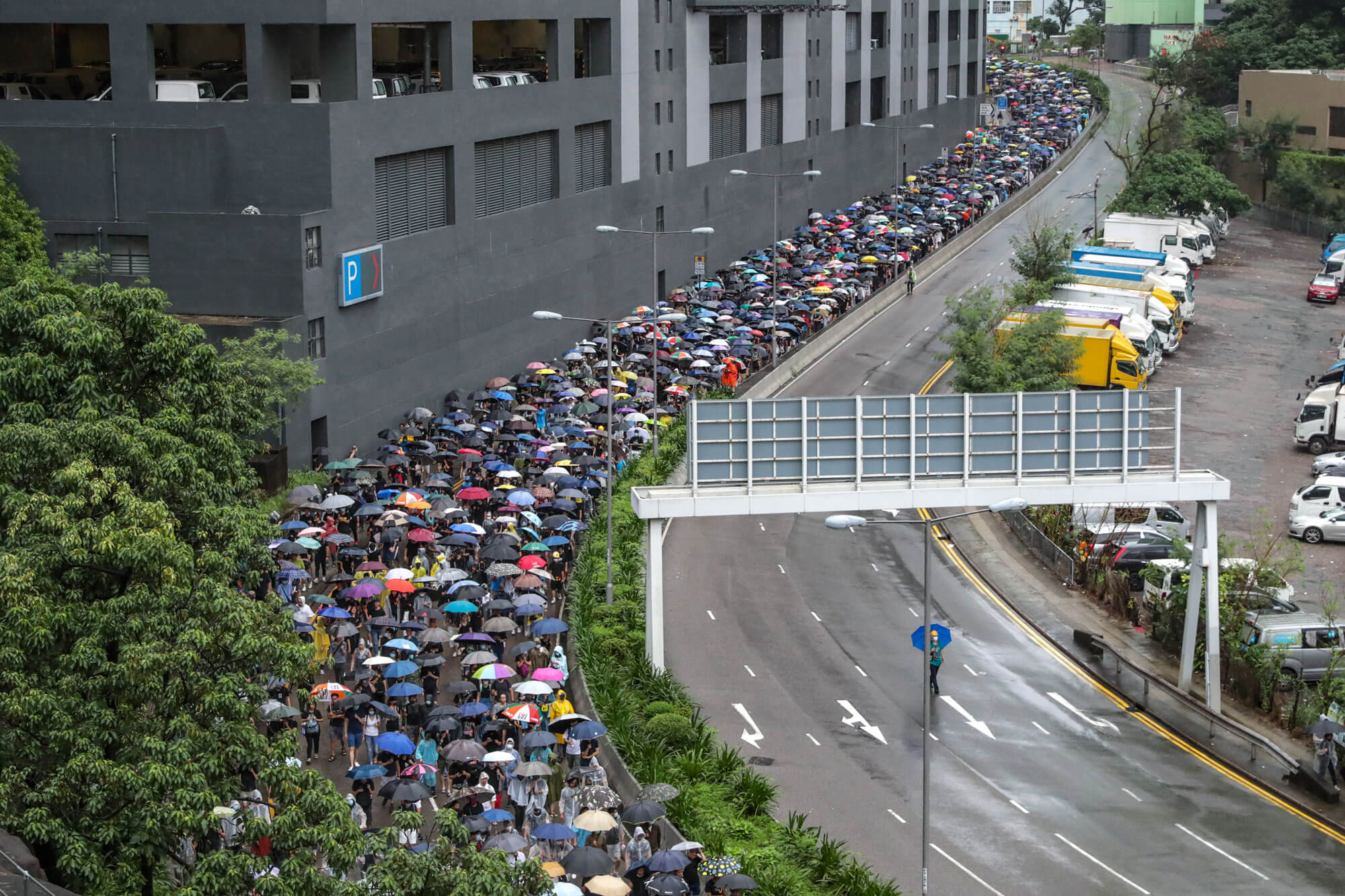
As tensions rose, protesters hurled bricks and petrol bombs at officers. Police responded with tear gas but protesters held their ground, setting fires on the road before two water cannon vehicles were deployed for the first time. The protesters retreated.
Later in the evening, some protesters went to Sham Shui Po to continue their fight with police, while scores of demonstrators went to the Cross-Harbour Tunnel in Hung Hom and vandalised toll booths and facilities.
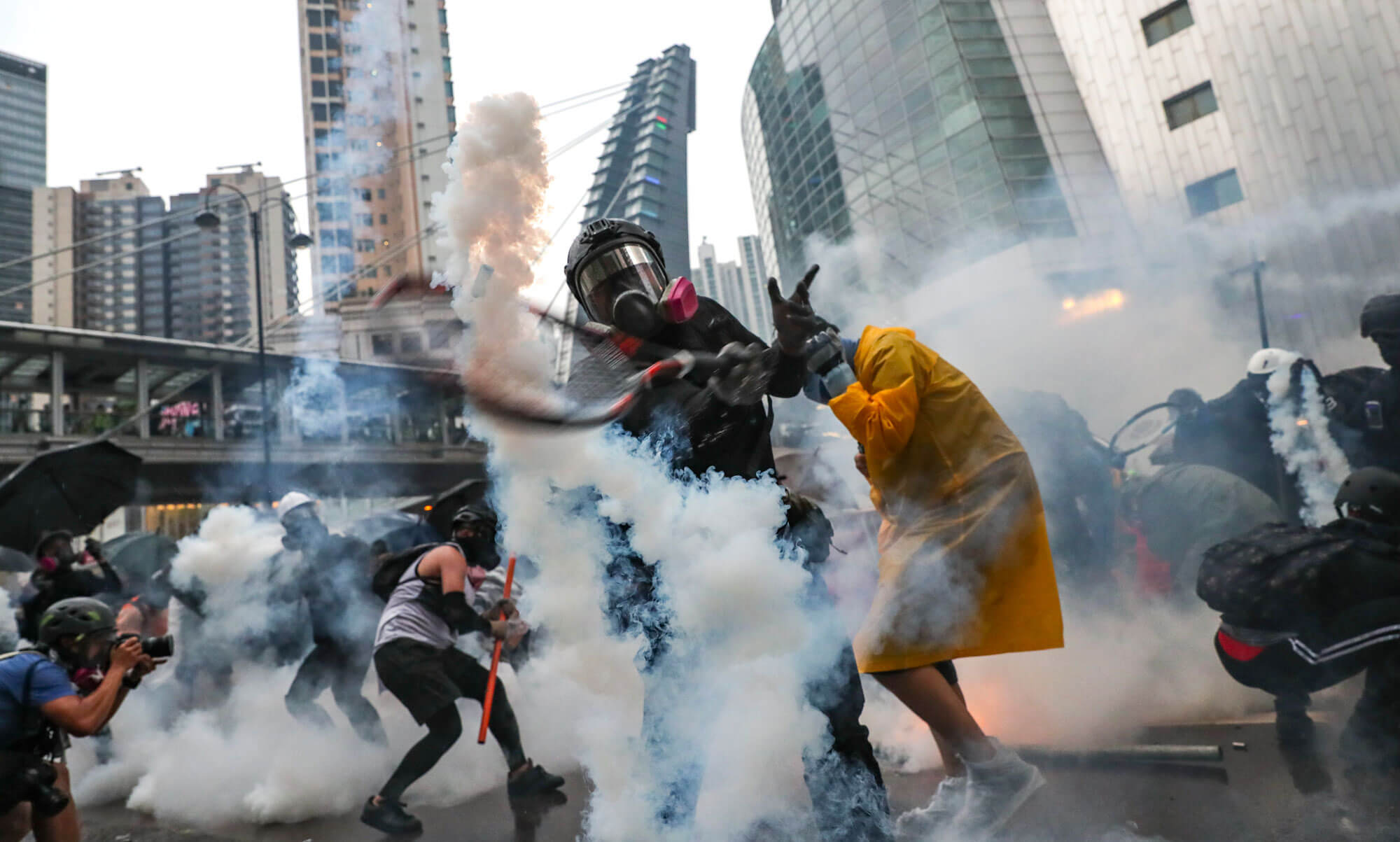
Earlier in the day, a few hundred people claiming to be relatives of police officers gathered at Edinburgh Place calling for an independent inquiry into police use of force. The four major police unions said the group was a rogue organisation.
SATURDAY, AUGUST 31
UNDERCOVER POLICE
Defying a ban on demonstrations, thousands of protesters marched peacefully before radical groups surrounded the government headquarters and engaged in a violent stand-off with police. Petrol bombs were thrown at officers who deployed water cannons using blue dye.
Violent clashes erupted throughout the day and in the evening two live rounds were fired into the air near Victoria Park after protesters turned on undercover police.
The chaos continued as radical anti-government protesters set fire to barricades near Hennessy Road in Wan Chai and threw petrol bombs. At Prince Edward MTR station, riot police and elite personnel beat and arrested protesters on the platforms. Protesters and their supporters accused police of indiscriminately beating innocent commuters, but the force refuted such claims.
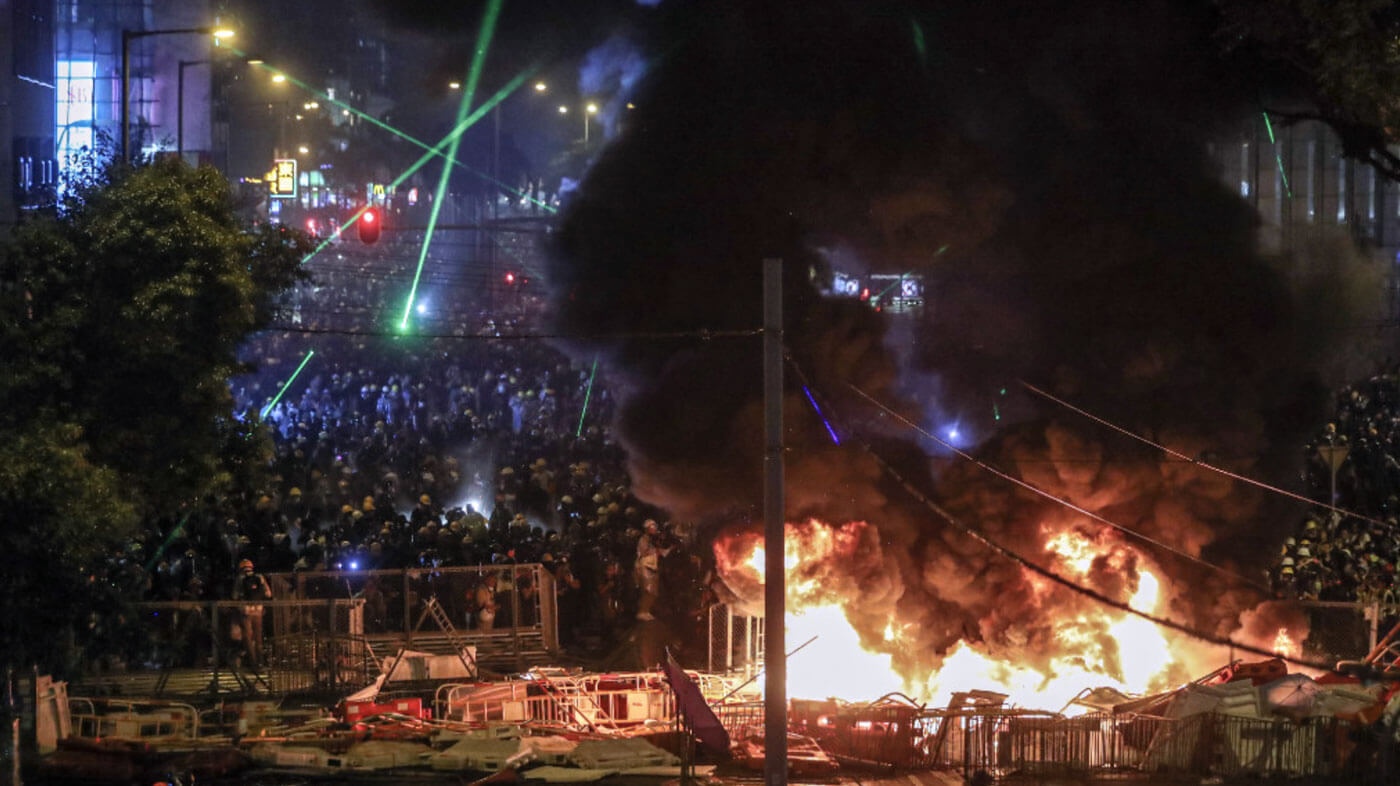
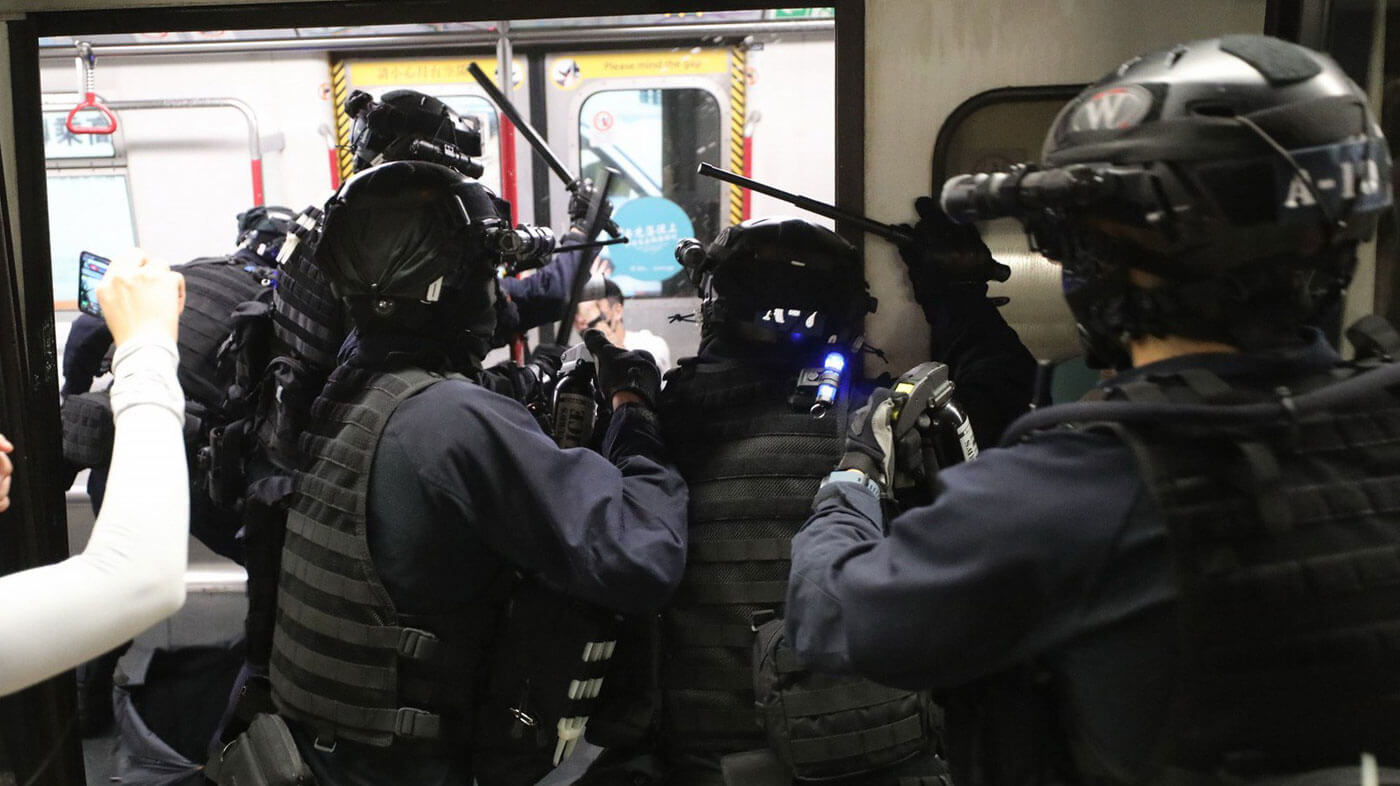
SUNDAY, SEPTEMBER 1
Anti-government protesters caused chaos outside the airport, before shifting their action to nearby Tung Chung town. Protesters vandalised an MTR station and forced the closure of an entire railway line.
MTR DISRUPTIONS
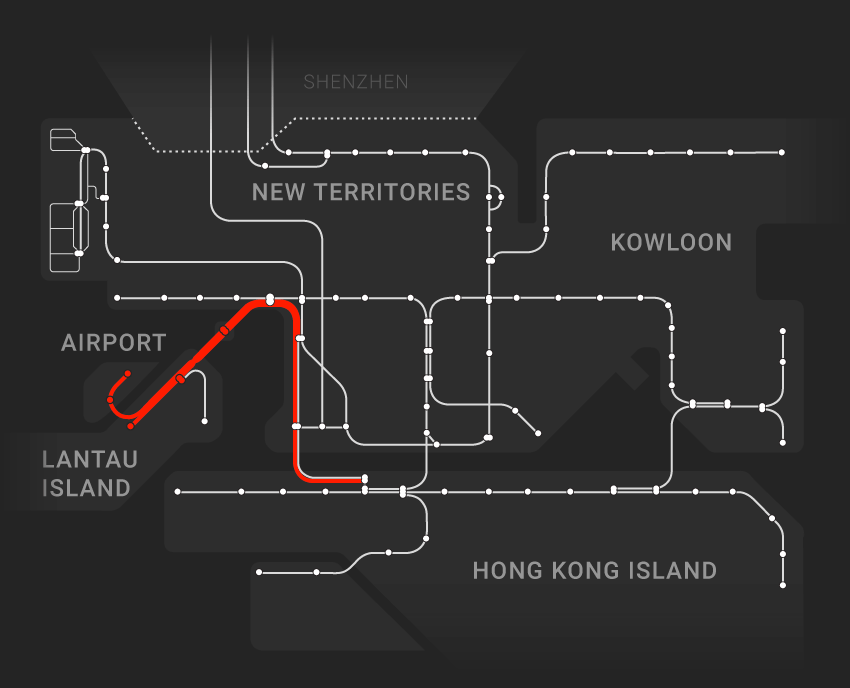
MONDAY, SEPTEMBER 2
Thousands of students boycotted the first day of the school year to hold a rally kicking off a two-week class boycott at 11 tertiary institutions across Hong Kong.
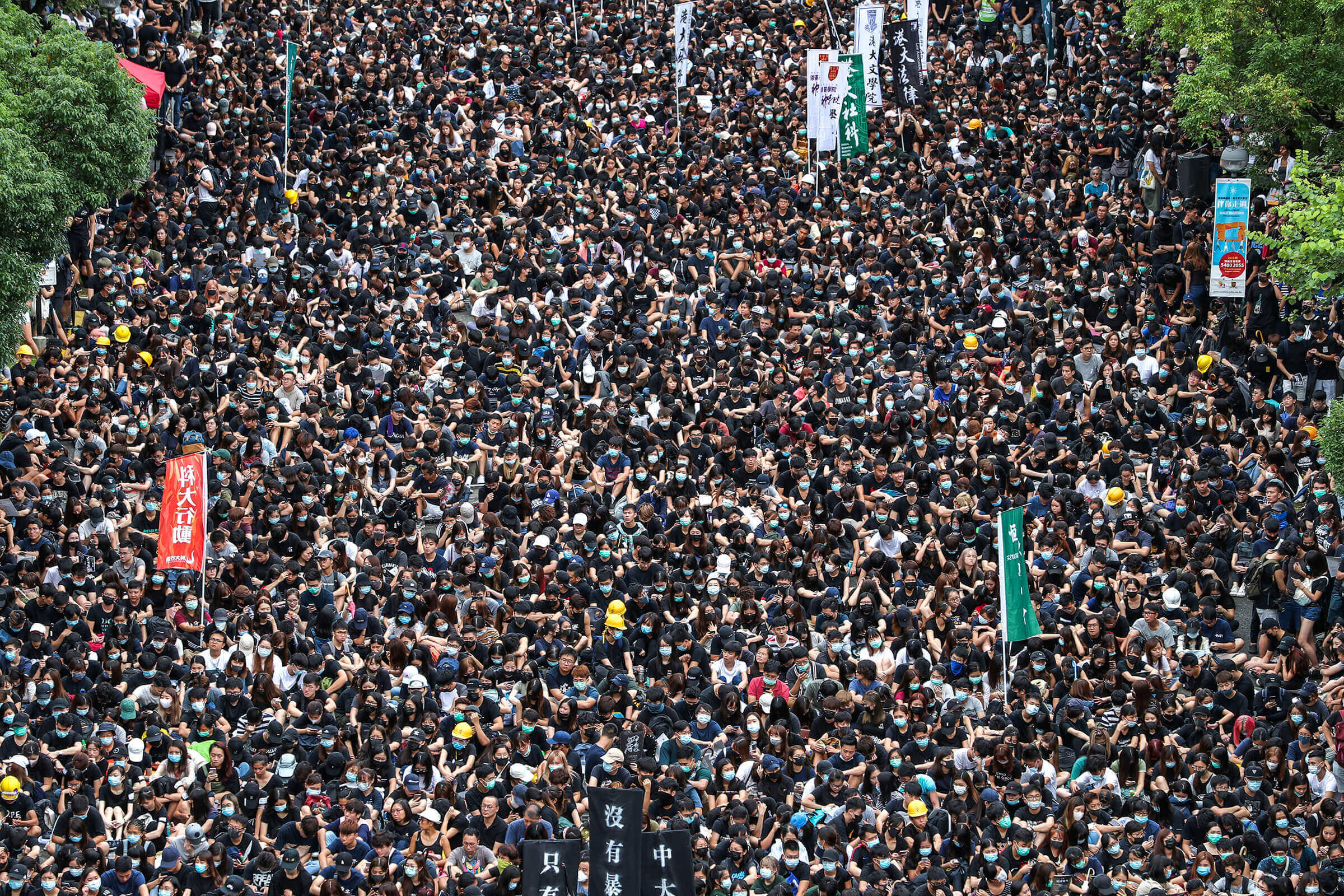
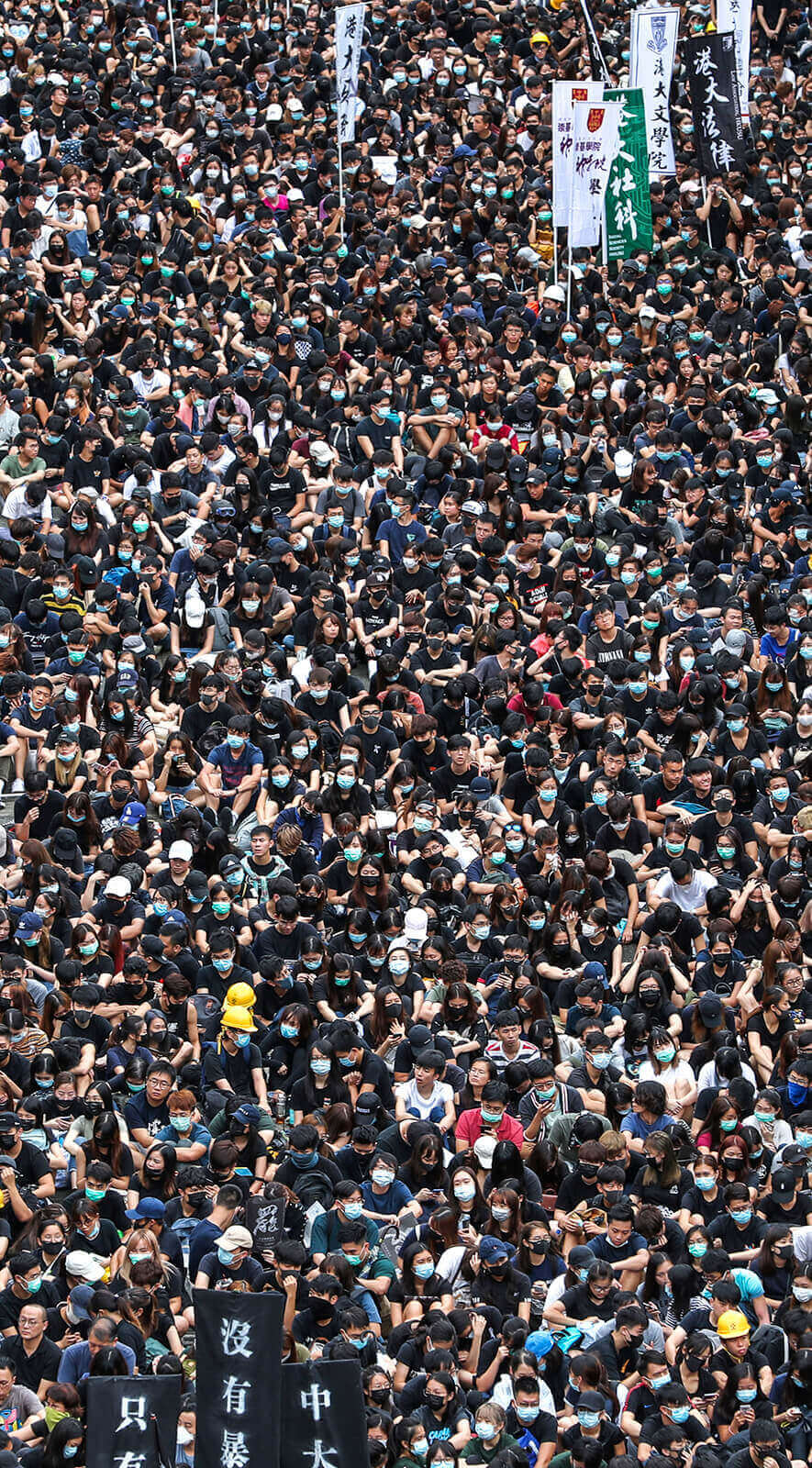
FRIDAY, SEPTEMBER 6
AND SATURDAY, SEPTEMBER 7
EXTRADITION BILL FORMALLY WITHDRAWN
The first weekend after Hong Kong leader Carrie Lam announced the formal withdrawal of the extradition bill got under way with the closure of Prince Edward MTR station during Friday rush hour after crowds gathered to demand the release of CCTV footage of police taking action against protesters on August 31. Tear gas was later fired on Nathan Road, before crowds and vandalism forced the closure of most of the Tsuen Wan MTR line.
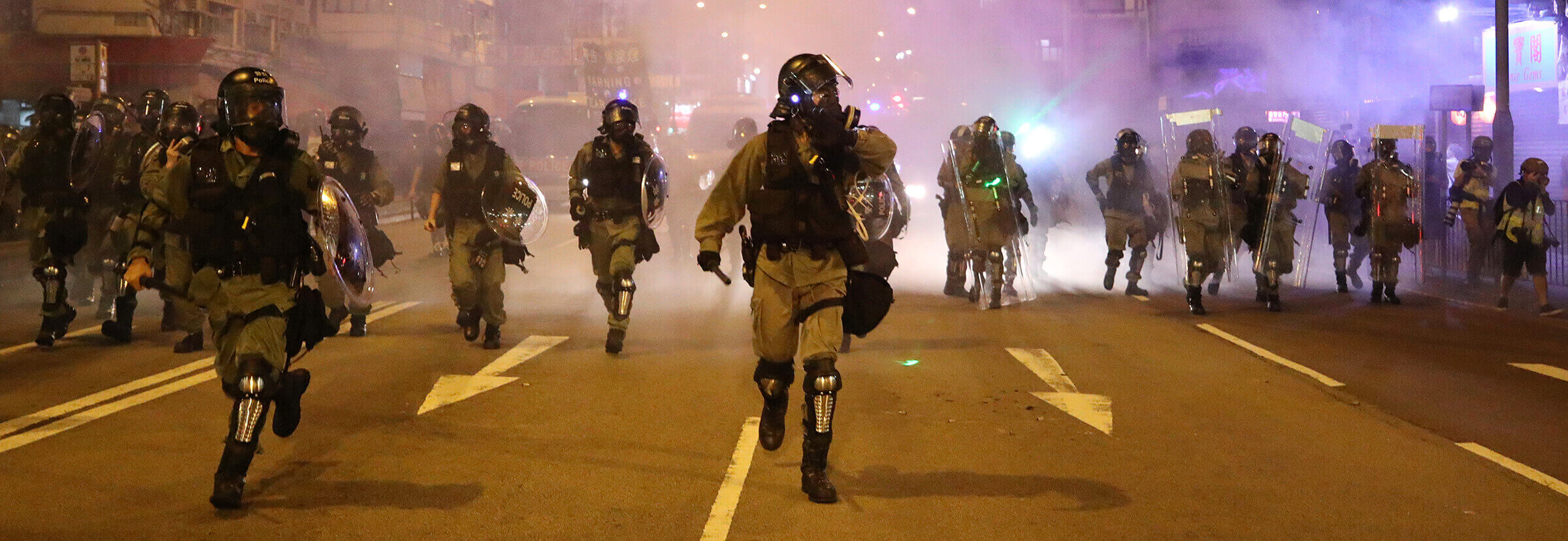
On Saturday, strong pre-emptive police and government action snuffed out the protesters’ attempt to besiege the airport. Prince Edward MTR station emerged as the focal point of the day’s protests and it was closed in the afternoon when at least 200 demonstrators surrounded it demanding the “truth” after rumours circulated that protesters had died there on August 31. Although tensions were high, it was less tense overall, with visibly smaller crowds. No tear gas was used and no petrol bombs were thrown.
SUNDAY, SEPTEMBER 8
Thousands of protesters joined a peaceful march from Chater Garden to the US consulate, urging American officials and politicians to take diplomatic action against the city’s government. Radicals broke away from the main rally setting fire to an entrance at Central MTR station and forcing Wan Chai, Mong Kok and Prince Edward stations to close as they vandalised entrances. Police responded with tear gas, baton charges and arrests.
FRIDAY, SEPTEMBER 13
AND SATURDAY, SEPTEMBER 14
MID-AUTUMN
The Mid-Autumn Festival got under way with thousands of demonstrators climbing Hong Kong’s iconic Lion Rock and Victoria Peak. They formed human chains and shone torches and laser pointers while singing the protest movement’s new anthem Glory to Hong Kong.
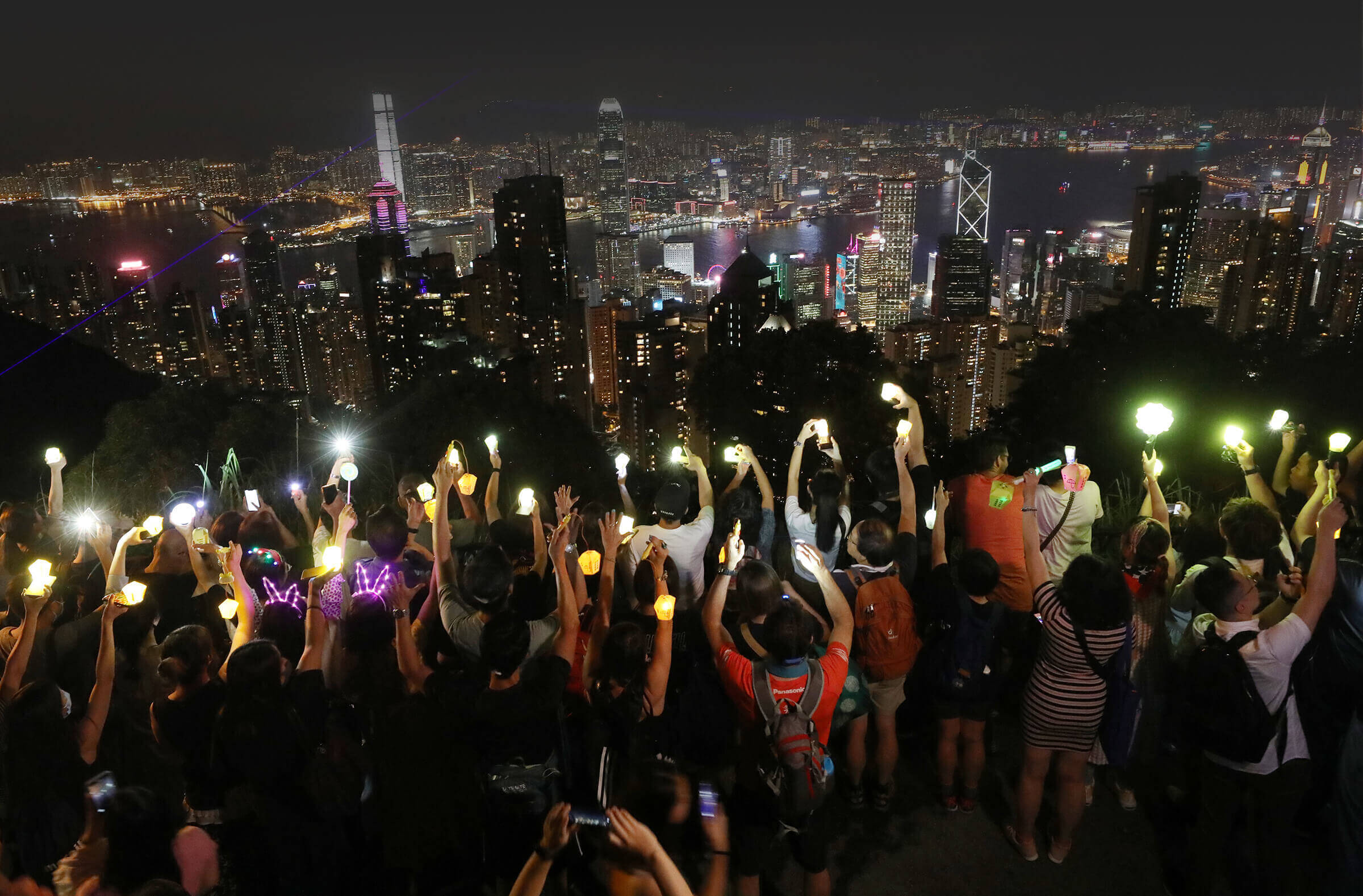
Skirmishes and fist fights broke out across parts of Hong Kong on Saturday as anti-government demonstrators and pro-Beijing supporters clashed during rallies, protests and singing sessions. Dozens of pro-Beijing supporters waved Chinese and Hong Kong flags on top of Lion Rock.
SUNDAY, SEPTEMBER 15
Illegal but peaceful marches again descended into violence when radical protesters broke away to battle riot police in Admiralty, Wan Chai and Causeway Bay. Masked mobs targeted the MTR and hurled petrol bombs at police. Riot police fired tear gas and rubber bullets and called in water cannons to disperse the crowds.
